#it's important to remember that the industry is still evolving
Explore tagged Tumblr posts
Text
LOGAN HOWLETT - NEED
A/N: CHAPTER TEN is here! I'm sorry it took me so long. I just had a lot on my plate. Enjoy!
Pairing: Logan Howlett x mutant female reader
Warning: I have decided to not give any warnings. Please remember this story is 18+.
Summary: Things move forward between Logan and Y/N.
Please, do not read if you are under 18. This story is suitable for mature audience. MINORS DNI!
Words: 4300+
Important note: Again, Logan is a tall MF, because they fucked up in the movies. Also, Hugh Jackman!Wolverine. This is set in AU.
A TOUCH OF HOPE MASTERLIST | Chapter Nine

LOGAN HOWLETT - NEED
Jean stood next to a hospital bed, looking down at unconscious Y/N. She had a chart in her hands, checking the data she collected the past three days. Three days - that’s how long Y/N was out of the present.
Logan didn’t want to leave her side once they removed the collar from his neck. The wounds immediately healed, and he became a new person. Jean managed to send Logan away. He insisted on staying by Y/N’s side until she’d open her eyes. Luckily, Jean persuaded him quickly. Even Storm wanted to remain by her side all the time. The friendship between her and Y/N blossomed fast.
When Storm arrived with the rest of the team, she was horrified when she found Logan wounded and weak next to an unconscious body. There was a slight fear Logan wouldn’t be able to heal from the wounds. When Hank and Jean freed Logan from the collar, the healing happened quickly. No one would tell he was fighting for his life hours ago.
Jean enjoyed the silence in the medical room. The only thing she heard was the beeping sound of a heart monitor.
The door to the room opened. Charles wheeled in, followed by Hank, Logan and Storm. Before anyone could ask anything, Jean gave them an answer. “No change. She’s stable, well, but still out.”
Charles was the first to approach the bed. His hands caressed Y/N’s exposed forearm, where he kept staring at the lightly radiating skin. It was fascinating. Charles didn’t have an exact answer for that. All they knew was that it had to do something with her mutation.
“You said it happened before?” The question was for Logan.
“Yes. It was the day we saved the boy and came back here. I noticed her eyes glowing.”
Charles thought about it. “Mutations can evolve. It is one thing you get to master your powers and manipulate them. In some cases, more abilities can be developed. I think this could be the case. Y/N’s mutation is evolving. I believe ner powers will rise to the surface very soon.”
“So, what? You will test her like a lab rat,” Logan scoffed, not fond of the idea. “Hadn’t she had enough of that?”
“I’m not saying we will test on her. That will only happen if she’d want to,” Charles said. “We have to wait until she awakes. It can be minutes, hours, or even days. Her mind is locked. I can’t get inside, no matter how much I try.”
“You said she created a force field around the whole school,” Storm looked at Logan. “Her energy got drained to the last bit. No wonder she’s been out for three days now. She’s never done anything like that before. She could have died.”
Jean approached the woman on the bed. She grabbed her hand, scanning the skin. “Why has this been happening for three days?”
“I forgot to mention one thing,” Logan cleared his throat. He crossed his arms over his chest. It got everyone’s attention. “The leader of the Trask unit that came to school was Y/N’s mother.”
“What?” they all said in unison. All eyes were on him.
Logan nodded. “After the accident with Y/N’s sister, her mother joined Trask Industries. She wanted revenge for her lost child. Turns out, she became a respected, high-ranked person there.”
There was silence. The information about Y/N’s mother was shocking. “That is a plot twist,” Storm commented.
“Y/N didn’t know about it, just to clarify,” Logan added strictly.
“She had her eyes on me since I escaped the lab in Salem,” said Y/N’s voice from the bed.
They all turned to the voice. Logan was the first by her side, staring at her face. Her eyes were open a crack. She was getting used to the light. Y/N blinked a few times before her eyes moved to look at Logan. He saw that her irises were glowing like the colours of the force field - silvery and blue. When she blinked again a few times, they turned back to normal.
“JJ was a trap,” she continued. “It gave away my location. Because of me, the children were in danger. Everything that happened was my fault.”
“No,” Storm walked to her from the other side. She grabbed Y/N’s hand. “You couldn’t know that would happen. All you wanted was to save the boy. And you did it. How could you know it was a trap? Also, you protected the whole school. The building is standing still because of you.”
A yawn escaped Y/N’s lips. “Is everyone okay?”
“Yes,” Jean nodded. She had a gentle smile on her face. “They are all back in school. Colossus took them away just in time. The building is standing, and it is all thanks to you.”
“Good,” Y/N closed her eyes. “I’m glad no one got hurt.”
Charles opened his mouth, ready to ask a question. Quickly, he shut it, dismissing what he wanted to ask. “We’ll talk later. Rest,” he suggested.
As they walked away, Y/N opened her eyes and found Logan staring at her. His face was filled with worry. She winked at him. It was a sign to stay. Everyone left while he remained by her bed. The door closed. They were officially alone.
Slowly, she pushed her body up until she was sitting. She stretched her arms. Logan got closer to the bed. Her eyes traced over his body. She realised he wore a simple black T-shirt that perfectly showed his muscles. Her mouth opened, almost dropping down on her lap. Damn. There was an urge to touch his stomach, to feel the abs underneath her touch. She clenched the bedsheet tightly.
“How are you feeling?” Logan’s voice brought her back to reality.
Y/N gulped. “Tired,” she replied. “It might be because I’ve been out for… how long?”
“Three days.”
“That long? Shit,” she shook her head in disbelief. Y/N moved her body. She sat at the edge of the bed, legs hanging in the air. “How are you? What did I miss?”
“A stamp of approval from Scott,” Logan laughed when he said that. “And I’m fine.”
Y/N’s mouth dropped. “Wow, I was expecting everything but that. Wait ‘til he hears about my mother being a part of Trask Industries. He will hate my guts once again. If not more.”
Logan’s eyes took in every detail of Y/N’s face. She had an amused smile on her face. Her eyes were shining with her natural colour. Her hair was all messy and tangled. And yet, she was the perfect thing he ever saw. Logan couldn’t believe he was able to kiss her that night. That dammed night when they were attacked.
He couldn’t tear his eyes away from her. Y/N noticed it. She took a deep breath, trying to prepare herself for what was about to come. She could feel it in the air. It got thicker and heavier with lust and something beautiful. She didn’t have the time to whisper his name. Logan’s lips found hers in a feverish kiss. One hand grabbed her by the neck to pull her body as close to his as possible. He had to lean down to reach for her lips.
Y/N’s left hand was feeling the hard abs on his abdomen. The other hand pressed against his cheek. She could feel the beard scratching the skin of her palm. How come he was so hot with that mutton chops beard? He could pull it off.
Logan broke the kiss. He sighed, annoyed. Y/N raised a brow. It was a silent question. She wanted to know why he stopped. “You’ll have a visitor in a few seconds.”
“Ah,” she chuckled. Y/N found it amusing. Logan was visibly unhappy someone had to interrupt them again. On the other hand, she admired his advanced hearing. No one needed to know something was happening between them. It was too soon to show. The first thing they needed to do was to talk about it and define what this thing was between them.
As he stepped back, the door opened. Kitty walked in with Jerome by her side. Y/N’s eyes lit up when she saw him. “Hi, JJ!” A smile spread across her face.
“He wanted to see you,” Kitty said when they approached the bed. “He heard us when we talked in the hallway. I hope that’s okay.”
“Of course it is,” Y/N nodded quickly. Her eyes trailed to Logan. He had his arms crossed over his chest, glaring at the child. Y/N wanted to laugh at him. It was funny he was jealous of a kid. When JJ sat on the bed next to her, she patted his head.
“Are you feeling okay?” JJ asked her. “I’ve heard what happened. Everyone knows what happened. You saved the school!”
Y/N blinked a few times. She didn’t know what to say to that. “Yeah, she did,” Logan stepped in. “She got to warn us before the attackers came.”
“That’s badass,” Jerome said excitedly. “How did you know about it? Do you have a new mutation? My friends asked about you,” he kept talking fast. “You are like a celebrity among the students. You are a hero,” he explained.
“Oh,” Y/N was not pleased with that information. She didn’t want to be a hero. “There are better heroes out there. Look at Professor Xavier or Storm, Kitty… they are the real heroes here. I just did what was necessary.”
“I wish I could see it,” JJ sighed, upset that he wasn’t there. Colossus took him and the children to a safe place before the soldiers marched in.
“I’m glad you managed to get to a safe place with Colossus,” Y/N dishevelled his hair.
“How are you feeling, Y/N?” Kitty used the silence to ask her.
“Tired,” she gave her the same answer as she had said to Logan. “Thanks for bringing JJ here. At least I know he’s well,” and she pressed a gentle kiss on top of the boy’s head. He slowly became the little brother she never had.
When Kitty took Jerome away, Logan was relieved to be alone with Y/N again. This time, he sat next to her on the bed. His hand found the back of her neck. He started to massage it. Y/N’s eyes closed. She almost purred. A moan escaped her mouth. Logan’s eyes widened at that sound, and he grinned. “That was a pretty sound. You should make more.”
She glared at him. “Dirty mind.”
When he stopped, he leaned closer. “Let me take you back to your room,” he whispered. He kept breathing in Y/N’s scent.
“Again, dirty mind,” she chuckled.
Logan pressed a soft kiss on her forehead. “You are the one with a dirty mind. I didn’t mean it like that, princess.”
Y/N watched as he got closer, wanting to kiss her again. She pressed an index finger to his lips, stopping him. “I need to do one more thing before we leave,” she said, staring into his eyes. She reached for one of his hands and brushed her fingers against his knuckles. “Scratch me with your claws.”
Logan raised his brows, pushing away a little. “What?”
“Please, do it,” she begged. “I need you to scratch me with them. You’ll see why.”
“No,” he shook his head and pulled away from her. His eyes focused on the floor, frowning. “I’m not going to hurt you.”
Y/N rolled her eyes. “You will not hurt me, I promise you. I need to see something. Either you will scratch me with a claw, or I will find a knife and do it myself.”
He growled like a wolf. When Logan clenched a fist, one of the claws slowly came out under his skin. He then turned his body to her. Y/N prepared her forearm. Before he could change his mind, Logan cut into her skin, making her bleed. A second later, the wound lit up like the colours of her forcefield and started closing in front of their eyes.
“Shit,” she mumbled. “I didn’t know I could do that. That’s new.”
“Damn,” Logan sighed. “That explains why we didn’t find any bullet wounds on your body. There was blood but no gashes. You can heal.”
“I can heal,” she nodded. Y/N buried her face into her hands, sighing loudly. “Holy shit, I can heal. That might explain why I could remain alive all these years in the labs. I know it happened when they attacked us. I remember being shot. I remember the pain. When I looked a few seconds later, the wound wasn’t there. I just needed to be sure that it wasn’t a hallucination.”
Logan grabbed one of her hands and pressed a soft kiss on top of it. It was a sweet, loving gesture. “Come on, princess. I’ll take you to your room.”
“Aw, such a gentleman,” she patted his beard-covered cheek playfully. “I should get wounded more. You’ll treat me like a princess every second of my life,” she teased.
“Very funny.”
They left the lowest level underground. Logan kept her close to him but didn’t touch her. They kept some distance between them in case someone decided to appear out of nowhere. He kept an eye on her in case she would show any sign of weakness.
The atmosphere changed when they arrived at the main level. The students were walking around the hallways, chatting. None of them were holding books. It meant only one thing - it was already afternoon.
One by one, they turned their attention to Logan and Y/N. When they found their teachers walking down the hallway, they stopped talking. The attention was now on them. Fingers were being pointed at them, as well as whispers spreading around.
“That’s her,” someone said.
“She saved the school.”
“They protected us.”
“She teaches English.”
“I want to be as cool as them.”
“Miss Y/L/N can make forcefields.”
All Y/N could hear in her mind was freak, weirdo, murderer. You killed her! You killed my baby!
Y/N closed her eyes and stopped walking. The attention was unpleasant. Logan noticed her face. His hand found Y/N’s lower back. It was a gentle gesture. He pressed his fingers lightly against her. Logan kept watching her face. He could see how her breath quickened. “You okay?” he asked.
Y/N gave him one gentle nod. When she opened her eyes, they started to travel around the place. They captured every single child that was staring at her. Their looks were different. The thoughts that were screaming inside her mind eased. They were barely whispers. Before, she’d feel like the biggest weirdo on the entire planet. Now, the feeling was different. She didn’t want to run away from it. Y/N was aware that she and Logan protected the whole school.
Y/N continued to walk through the crowd of students. She headed to the stairs with Logan close behind. No one asked a thing. No one wanted to talk to her. Y/N appreciated it all.
“The kids look up to ya,” Logan said when they climbed all the stairs to the third floor. They stopped in front of Y/N’s room. “They always do when someone becomes a hero,” he made a face.
“I’m no hero,” she shrugged. It made her feel uncomfortable. “I only did what was necessary.”
Logan sighed. “You sure you’ll be fine?”
She leaned against the closed door and smiled. “Yes, I will. Thank you, my knight in shining armour. I shall give you flowers for your bravery,” she bowed to him a little, laughing.
“Text me if you need me, and I’ll come to you, princess,” he winked at her.
Y/N walked into her room. She closed the door, sighing. Logan left without a kiss. Why was she so upset about it? Rolling her eyes, Y/N walked to the bathroom. She needed to shower the last three unconscious days and a fight where she came face to face with her mother.
. . .
It was ten in the evening. The whole school was silent. The students were in their rooms, already asleep. During school days, they all had to be in their dorms before nine.
Y/N was inside her room the whole time. After a long hot shower, she changed into fresh clothes. She then fell asleep on her bed for a few hours. Her body was tired. It called for a nap. Now, she was sitting on the bed, finishing a French braid. Y/N could smell the coconut shampoo on her body. Her mind kept wandering to Logan, her mother and back.
How is it that when something nice was happening, a shit from the past had to appear at the exact moment? Shaking her head, she tied the end of the braid with a rubber band.
There was a knock on the door. Before Y/N could open her mouth, the door slowly opened. Logan walked in, frowning. When he noticed her sitting on the bed, his face softened.
“What’s with the face?” she asked, grinning.
He closed the door behind him and approached the bed. “I was worried, okay?”
Y/N kneeled on the bed, laughing. “Aw, that is so sweet. The big bad Wolverine was worried about me.” Her eyes watched as he took a seat next to her. “I’m sorry for giving you wrinkles. I fell asleep after the shower.”
Logan huffed, nodding. And then, in a mere second, Logan grabbed her into his arms. One held her by the waist while the other was behind her neck. Their lips connected in a sloppy, passionate kiss. At this point, Y/N wasn’t even surprised by his sudden action. All she could do was think about him - his lips, his touch. Their tongues pressed together, mouths sliding hungrily. They got lost in their passion.
“I was worried about you,” said Logan when their lips disconnected. “I was going crazy watching you unconscious on that damn bed,” he admitted. “I’d be really pissed if something happened to you.”
Her finger gently stroked the bridge of his nose. “When I saw you with that collar, powerless, I knew I had to do anything to protect you. You became a simple mortal human being. It wasn’t nice to see you all wounded and defeated. I was worried that…”
Logan’s brows raised. “What?” he asked softly.
“We wouldn’t be able to start whatever it is between us,” she looked away.
Logan sat on the bed and brought her onto his lap. His hands held her by the hips, gripping them tightly. Y/N wrapped her arms around his neck, pressing her breasts to his chest. “Oh, princess,” he sighed, staring into her eyes. They travelled to her lips. “Good thing we survived. We can now continue where we left off.”
Y/N felt the thrill rushing through her body. However, her face heated up. Suddenly, she was shy. Logan saw it all. One of his hands rested on her cheeks. “Don’t go shy on me now, sweetheart,” he chuckled.
Y/N playfully rolled her eyes. “Well, the last time I had something with a guy was over five years ago,” she made a face.
“We don’t have to…”
“But I want to,” she stopped him by pressing a finger to his lips. “I want to, Logan. I-” Her eyes scanned his green ones. There was something on her lips she wanted to say. It was too soon to confess. Y/N knew what she felt for him, but she didn’t allow herself to say it out loud. After she swallowed the truthful words, she said, “I want you.”
The air changed in the room. With a gentle touch, Logan traced the curves of her body, feeling the tremble of excitement beneath his fingertips. As their lips met in a tender kiss, they both felt the rush of passion surge through them, melting away any lingering doubts or inhibitions.
The first pieces of clothing were gone in mere seconds. Logan took off Y/N’s T-shirt, showing her exposed chest to his eyes. He licked his lips as his eyes observed her beautiful breasts. When Y/N took off Logan’s white tank top, her nails lightly scratched his chest, enjoying the feeling of him under her fingertips. Slowly, they undressed each other, savouring the unveiling of skin, each moment building the intensity of their connection.
Y/N expected that, at some point, Logan would become rougher and impatient. She was surprised when he took his time and didn’t rush things. His touches were gentle and loving as if she were a fragile doll that would break under his touch.
“You smell so good, princess,” he growled. His mouth wrapped around her hardened nipple and sucked on it. He was rewarded with a moan. He sucked on it, circled it with a tongue. When he let it with a pop, Logan looked at her, grinning. “Next time, I will fuck ya like the naughty girl I know you are.”
“Logan,” she whispered his name.
He continued to lavish attention on her breasts. His mouth moved from one nipple to the other, alternating between bites and licks that sent shivers down her spine. He loved how she responded to his attention – it only fueled his passion further.
The moans kept escaping Y/N’s lips after every touch, every stroke and lick. The sound of her moans and gasps filled the air, making Logan’s dick throb painfully.
He grabbed her by the waist and laid her down on the bed. He positioned himself between her legs. “What a beautiful view,” he commented, eyeing her naked upper body.
Her hands reached for the big belt he wore. Y/N unfastened it, unbuttoned the jeans and pulled down the zipper. She realised he wasn’t wearing any underwear. Y/N’s brows raised up, and she grinned at him. She was met with his semi-hard length begging to be taken out of the jeans.“You like going commando?”
“I was in a hurry,” he said, grinning.
Y/N took him out, stroking him slowly from tip to base. She felt him twitch under her touch. He had a nice dick - perfect length, veiny, and he trimmed his pubic hair around his penis and balls. She heard him moan and curse under his nose.
“Fuck, baby girl,” his eyes rolled into the back of his head when she squeezed him harder. He stopped her movements. Logan took her hand off his throbbing member. He brought the hand to his lips and pressed a gentle kiss to her knuckles. “I want to be inside of you.”
Logan took off his jeans while his eyes remained on Y/N’s movements. He followed her hands - how they reached for the hem of her shorts. She took off the fabric with panties, and she exposed her pussy for his eyes to see. “Fuck,” he growled.
Once they were both naked, Logan positioned himself at the entrance of her wet pussy, looking down at her face with a mix of determination and desire burning in his eyes. He ran his thumb along her clit, making her squirm.
One last kiss before he positioned himself at her entrance and slowly pushed in. He watched Y/N’s reaction carefully, seeing the way her face contorted into a mixture of pleasure and anticipation. “Shit,” he cursed. “So tight.”
He started to move slowly, allowing their bodies to become one. Logan didn’t want to hurt her. His eyes were locked with hers with every move he made. He wanted to take his time, to savour every moment of being inside her, feeling her surround him completely.
“Fuck,” she gasped. “Faster, Logan. Please.”
Hearing her pleas, Logan's feral instincts kicked in, and he responded by increasing the pace of his thrusts, driving into her tight pussy with forceful strokes. He watched her breasts bounce with every snap of his hips. “You are so fucking pretty like this,” he praised her.
Another loud moan escaped Y/N’s lips. Her arms wrapped around his neck as she pressed him closer to her body, pressing her lips against his in a feverish kiss. It was sloppy and dirty, all tongue and teeth. One of his hands sneaked between their bodies. His thumb found her clit, and he started to toy with it.
Her walls clenched around his length. “Ah, fuck!” she gasped. “I’m so close.”
“Good, baby girl,” he said hoarsely. “Don’t hold up and come for me, pretty girl.”
He heard her cry out and felt her body tense as she approached climax. Logan increased the tempo of his movements even further, driving himself into her. He watched as Y/N reached her peak. Her eyes closed, walled gripped his cock tightly as waves of pleasure ran through her body.
Logan’s release followed a few seconds later. At the last moment, he pulled out and spilt his seed over her lower belly, grunting. “Ah, fuck, fuck,” he cursed.
Logan’s chest heaved with each laboured breath. The scent of sex and sweat filled the air around them as they lay there, spent and satisfied. Y/N turned her head to look at him. She watched as he breathed heavily. A smile appeared on her lips.
“Damn,” she whispered.
He turned his head, catching her eyes. Logan grinned at her. “That’s it?” he teased.
“I am speechless. Isn’t that enough?” Y/N winked at him. She rolled to her side, snuggling her naked body to his. Her fingers absentmindedly started to stroke his chest, brushing through some of the hairs.
Logan managed to capture her lips in a gentle kiss. “How are you feeling?”
Her eyes locked with his. “Happy,” she replied simply.
“How about one more round?” he suggested.
Y/N smacked his chest playfully. “Insatiable man.”
He grabbed her hand and led it down his body to his hard length. Y/N wrapped her fingers around his cock. “What can I say. I can’t get enough of you.”
She giggled. “Cheezy. Fine, one more round.”
“This time, you will ride me, pretty girl.”
#Logan Howlett x reader#Logan Howlett x female rader#Logan Howlett x reader smut#Logan Howlett x female reader smut#Wolverine x reader#Wolverine x female reader#Wolverine x reader smut#Wolverine x female reader smut#Marvel fanfiction#A touch of Hope#Logan Howlett smut
747 notes
·
View notes
Note
Hello, loved that levi ask and what you said is what i believed since bad boy came out, however there's this piece of information from isayama from his autograph session in 2018 he says :
Q: Kenny said he will never go to a brothel. Does Levi think the same way?” Isayama: “Because it’s an environment that Levi had been part of since childhood, it seems like he considers prostitution as just another ordinary job.”
I have a hard time seeing how this fit or maybe isayama changed his mind? What do you think?
This ask is in reference to this post.
Hi, anon, thank you for your ask! And thank you for your kind words. I’m glad I was able to verbalize some of your own thoughts.
You know, I’ve seen this quote referenced several times, and I also find it interesting. Now, I don’t speak Japanese, so I can’t entirely speak to (1) the accuracy of the translation and (2) the nuances of Isayama’s intended meaning and phrasing. But, based on how I interpret his words, I don’t think they contradict the idea that Levi may have experienced trauma related to the environment he grew up in.
When I read that quote, I interpret it as Levi not judging people who engage in sex work, not that he views the industry as entirely harmless. Growing up in the Underground, prostitution was likely one of the few options available for survival—especially for women like Kuchel. Levi knows that. He saw it firsthand. I think Isayama is saying Levi doesn’t look down on sex workers or moralize their choices because, to him, sex work was part of the economic reality of poverty. It was common. It was normalized. That doesn’t mean it wasn’t also exploitative, violent, or traumatizing; it just means Levi is able to recognize the systemic forces that put people, including his mother, in those positions. And crucially, it means he directs any judgment or anger toward those systems, not toward the people trapped within them.
We know, for example, Levi deeply respects his mother. He holds Kuchel in the highest regard; he honors her memory, seeks to remember her, and he never speaks about her with bitterness or shame (he even sees her as elegant). But that respect doesn’t mean he was blind to the toll her occupation took on her, or on him. Levi understands what poverty and desperation can do to people. So it’s entirely consistent that he would view sex work as “ordinary” in the sense of “commonplace” or “survival-driven,” while still recognizing the harm and coercion often embedded in it.
Those ideas aren’t mutually exclusive. You can have compassion for the individuals involved, even as you criticize the system that exploits them. And Levi, more than most characters, is capable of holding those two truths at once.
Also, it’s important to recognize that Isayama’s comments outside the manga often reflect a broad, neutral stance. He tends to give room for multiple interpretations and has admitted before that his thoughts on characters evolve over time.
#attack on titan#levi ackerman#kuchel ackerman#shingeki no kyojin#shingeki no kyoujin#aot#snk#levi#aot meta#snk meta#aot.meta#meta.levi#c: levi ackerman#c: kuchel ackerman#meta.kuchel#r: kuchel & levi#my thoughts#asks#anon asks
44 notes
·
View notes
Text
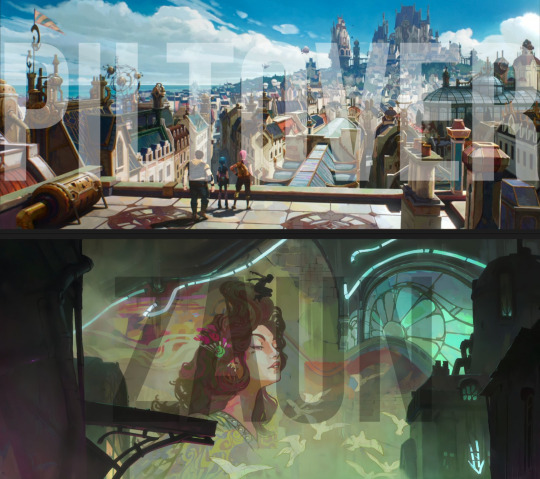
I come with a different kind of work that I do (analysis and art direction) about one of my favorite pieces of art to ever be created.
What does Arcane tell us with its visual storytelling and art direction that ENHANCES the story? A LOT actually. And as many works of art, it takes inspiration from real life. So, Art Nouveau and Art Déco as seen through Piltover and Zaun.
First of all, it's important to note that both of these art movements originated in France, Art Nouveu during the Belle Époque and Art Déco during and after WWI. A few decades apart and IT'S IMPORTANT. Fortiche is a french animation studio so OF COURSE it fits like a glove.

Art Nouveau came first during latter 1800s kind of like a protest or reaction against fine arts and Academic art which seemed elitist to some (sound familiar?). It wanted to infuse art with more freedom, creativity and vitality. Hence the name: "new art".
Also to mix artisanal work and more mundane expressions with art. That's why you can see every day things in this style. AN had its origins in the Arts & Crafts movement, but was also influenced by Asian styles, hence the long and decorative lines.

Why's this important for Arcane? Well, because (disclaimer) old lore said that the Undercity (with a strong art nouveau style) used to be older until an earthquake created the Fissures and made the separation between Piltover more prominent. They used to be one city.
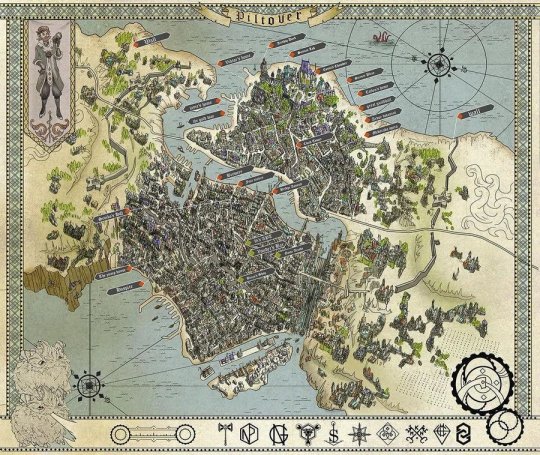
I'm no expert on old League lore and we don't know many details about current one but it still fits thematically with what happened irl. Art Nouveau was always a rebellious movement and believed in bringing the arts to every day people. Just like Zaun is artistic everywhere.
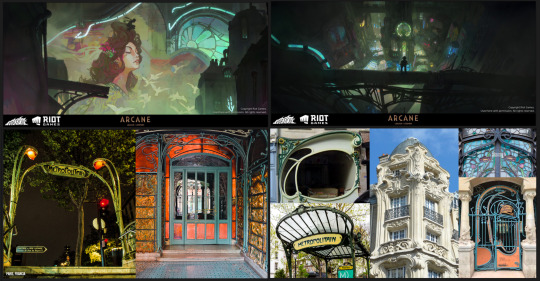
So what makes Art Nouveau (and hence Zaun) easy to recognize? Organic and fluid lines, ASYMMETRY, mix of different and modern materials like iron, glass, ceramic. But the most important imo is that it's the mix of different cultures. Remember P&Z are a hotpot of cultures too.
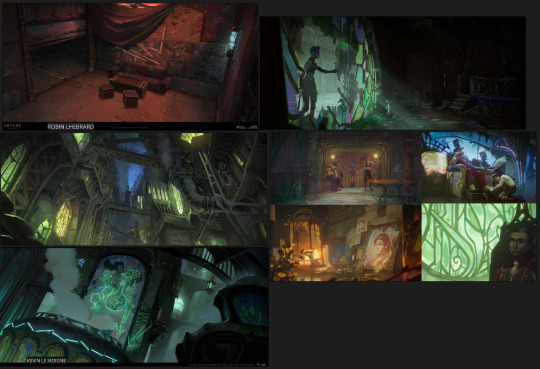
Now then, Art Déco came later but as every movement, it's a response. During WWI (1914-1918) art became meaningless (in Europe) cuz when you're at war, what use is it? AD became a style that could bring purpose and worth to art again.
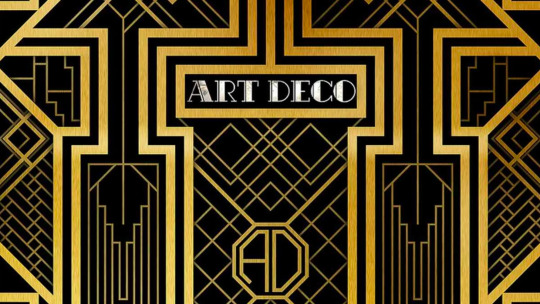
In 1925, the International Exhibition of Modern Decorative and Industrial Arts in Paris presented a new "modern style" that would show PROGRESS and technology advancements to demonstrate that despite the war, there was smth to look forward to. "The future is BRIGHT!"

It took off. And even though it was named Art Déco way later, we can see how art can influence public perception. AD was most popular in the USA (no surprises) and where we can see it shining brighter is in architecture.
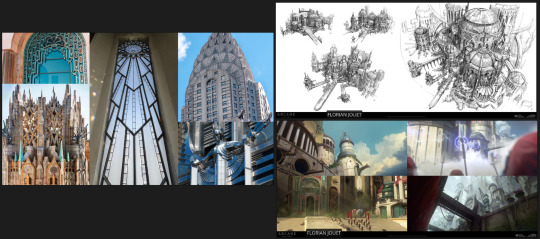
Art Déco and Piltover can be distinguished by geometric lines, SYMMETRY, sharp and clean designs, and an elegant showcase of artistic choices. That's why everything in Piltover is gilded and carefully curated. It represents exactly that: PROGRESS after war.
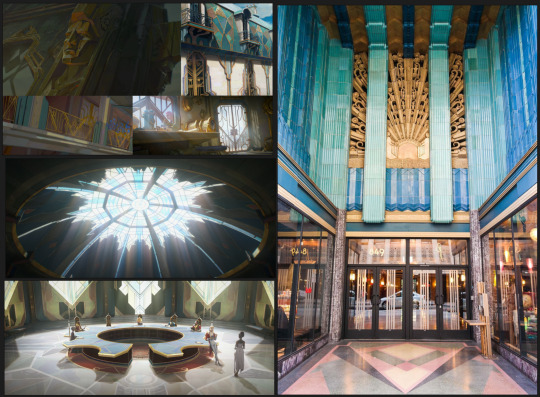
So then we have these 2 art styles and 2 cities that seem completely opposite. But they actually complement each other. What one has, the other doesn't and viceversa. This is shown EVERYWHERE in Arcane. Character designs, environment, props, and even the tech they use.
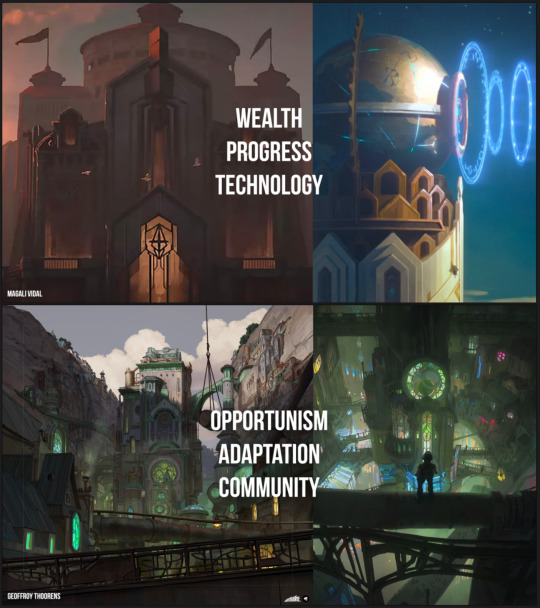
I'm not sure if this was intentional, but even Arcane's style kind of looks like it took inspiration from painters from that time period. Obviously Alphonse Mucha (art nouveau) is easy to recognize but maybe Tamara De Lempicka (art deco) not so much.
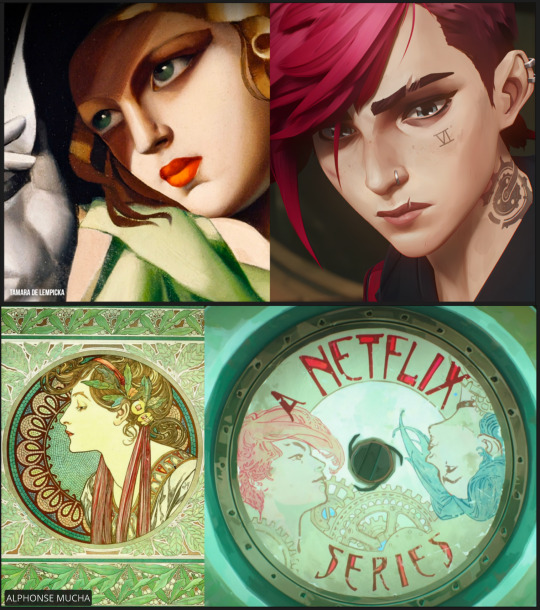
So we have these two sister cities inspired by real life styles because all art is political. Zaun is older and community focused, while Piltover's newer and innovation focused. Piltover's SYMMETRY vs Zaun's ASYMMETRY and how you can read EVERYTHING through these lenses.
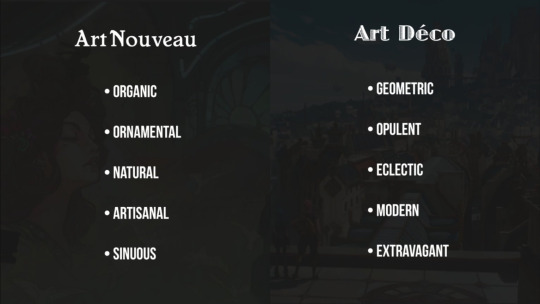
From character arcs, to alliances and betrayals, to how the narrative evolves and changes and show when and WHY events happen. You could even predict what would happen from reading the place where it was going to happen. It parallels everything.

But despite the differences, there is a bridge between the two cities and the story starts right there. Just like both Art Nouveau and Art Déco originated from the same place, France, where you can see both styles around the city coexisting. Bonus pic Piltover Montepellier
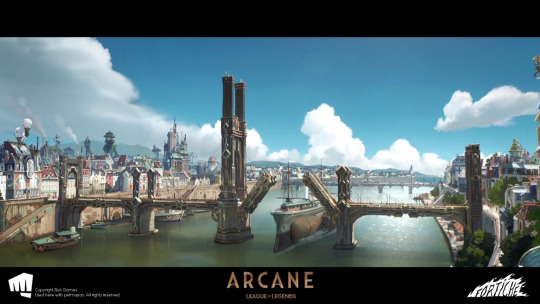
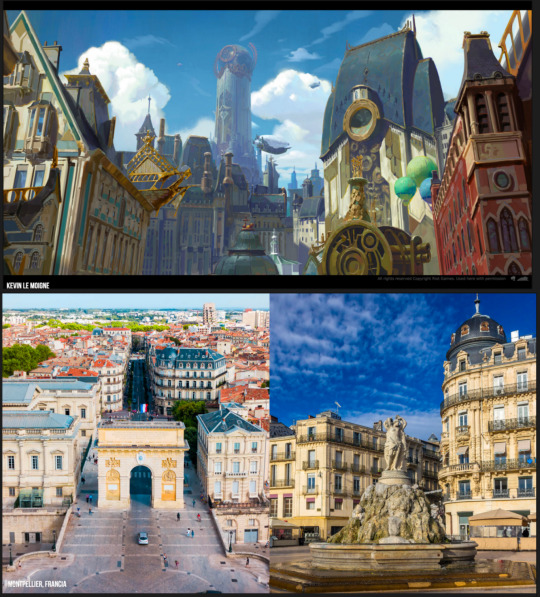
And that's it for today, folks! There are OCEANS more of stuff going on visually in Arcane so lmk if you want me to dive in anything else, like char designs (you can see where they will end up in their design) and color in the show, which is so meaningful.
Disclaimer, I'm no art historian at ALL and I used an oversimplification of each art style and movement in this post so it was easier to understand. But if you liked this, I suggest reading more about it, it's super interesting! I love Arcane with my whole heart <3
Disclaimer #2, I didn't work at Fortiche ( :C ) or Riot either, this is only an analysis. If anything here was unintentional from the artists and creators, that just speaks more to the incredible work they did.
Arcane's one of the most important masterpieces of this era imo
#arcane#arcane analysis#arcane league of legends#art direction#production design#architecture#arcane season 2#arcane art
37 notes
·
View notes
Text
StackedCon - VanKuva Edition
The Project Managers Review
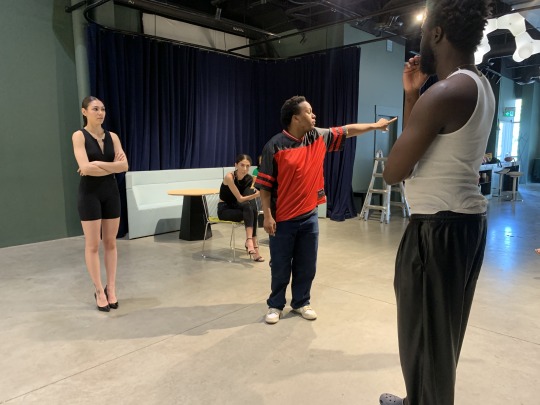
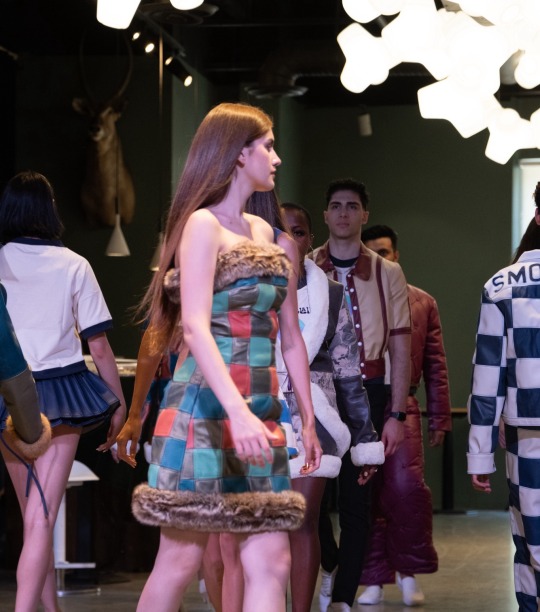



"The Sustainabale Runway"
Respectful Discourse: I encourage respectful discussion and welcome differing opinions. Fashion is a dynamic and evolving art form, and dialogue fosters growth and understanding within the industry.
This journal article is my review of the Stacked Fashion Conventions Sustainable Fashion Expo, highlighting the production process and my personal experiences and observations.
StackedCon Vancouver
I would say that producing a fashion convention in Vancity was long overdue. Imagining the event production process in Vancouver was quite different from the actual experience, especially when working within a niche in the production sector and in a new city. It can be a daunting task. An organized mind is needed for proper planning and execution, but apart from a singular mind, brains must touch.
Producing something in a new space cannot be done alone, no matter your experience.

When having pre-event discussions with the proposed team, I was considering my experience from my last two shows while talking to them about the organization of this event. They literally did not want to hear about it. I distinctly remember hearing Seyithepoet ringing in my ear, "Bobo, this is not ABJ," meaning this event was not like the ones I had done in the city before. This prompted me to grind like never before.
New scene, new character.
The Production Experience
As soon as the production process started, I learned that entering a new scene involves a process of adaptive learning, and working with people from diverse backgrounds can significantly shape an event producer's perspective. Taking note of individual experiences and ideas was also very important, as it created a foundation for communicative collaborations.

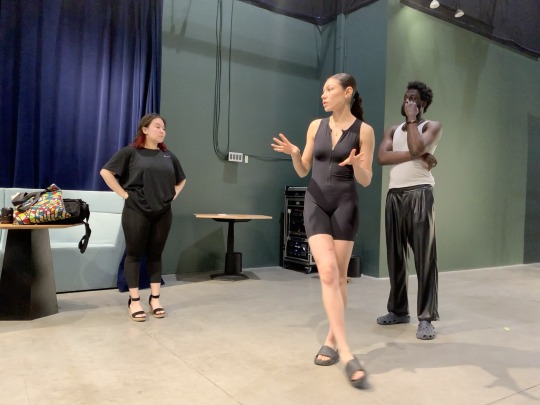

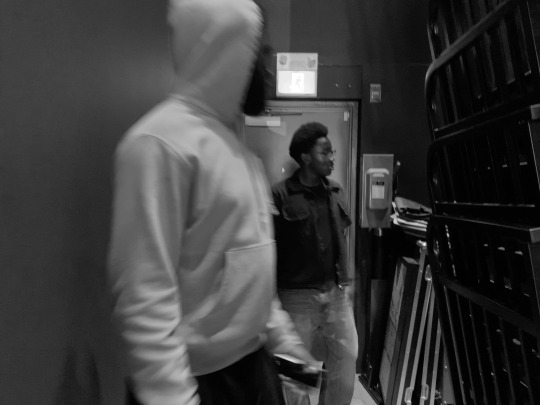
I also realized that effective communication is the foundation of almost all processes. Constantly informing everyone about the next step and what they need to know along the way is crucial, albeit challenging. People can easily become lost if they aren't informed about even the smallest details. This experience taught me not to expect too much from others and to communicate like a town crier.
In embracing this approach, I found peace in the clarity it brought, reinforcing the power of patience and communication.
Pre-event doings
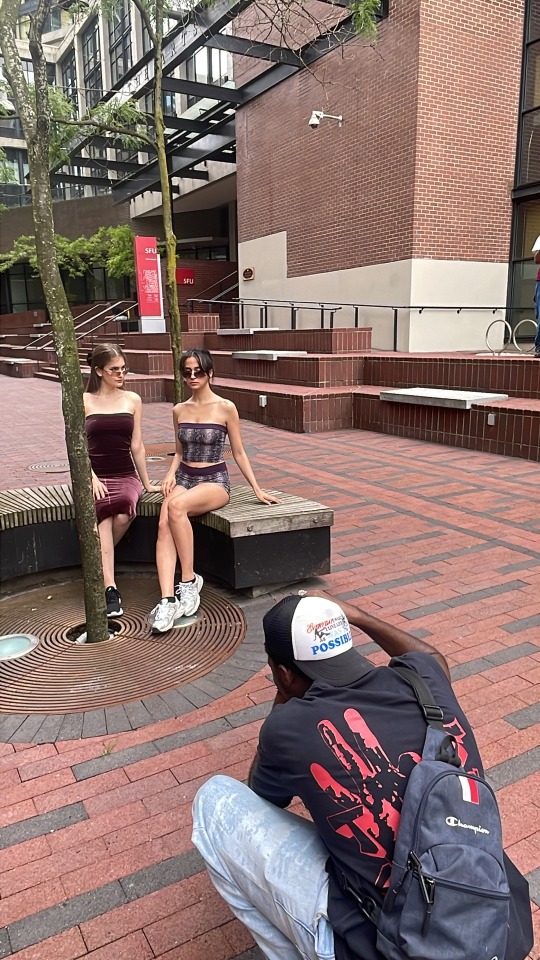

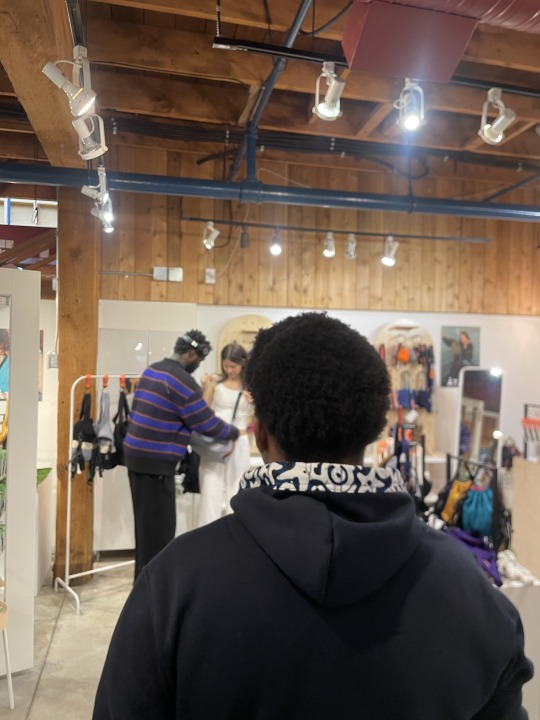
The collaborative spirit of everyone involved in this process still amazes me. I digress.
Prior to the event date, there was much to be done in preparation and promotion. Like planting seeds before a harvest, careful planning and nurturing were essential for the best outcome. A lot of deadlines were set for shoots, rehearsals, and team meetings.
Organizing a schedule for each step was crucial. So much compassion was needed from me, as many people put their time and effort into being part of this event.
There is a profound impact of shared commitment and hard work, underscoring the strength of our collective effort. The production team killed it.
------------------------------------------------------------------------------
July 13th 2024 - Event Day

After all the planning and running around, I told myself that I needed to experience this event not only as an organizer but also as an attendee.
Being part of the team behind the scenes was rewarding, but experiencing the event from the perspective of someone who came to explore and see what the production team accomplished was the main experience I didn’t want to miss.
I secured a front-row seat, which allowed me to experience the runway live and witness the entire production up close. It was a unique experience; I felt uneasy sitting idle and not working. However, it was profoundly impactful, especially seeing the event from both perspectives—as an organizer and a guest.
I was also very observant, taking note of individual attendee and team experiences. I made sure to lay the groundwork for attracting loyal and regular invitees and crew, so that if I were to host another event in the city, I wouldn’t fall short of past successes. My goal was to make the best of this event while setting the pace for future ones, ensuring continued interest in the Stacked Fashion Convention.
This dual perspective allowed me to fully appreciate both aspects of the event and take notes on any mistakes or areas for improvement.
While the event was successful and met its objectives, there is still room for enhancement. I thank God for making this possible.
------------------------------------------------------------------------------
Closing
With heartfelt gratitude, I seize this moment to extend formal appreciation and recognition to the exceptional event production team of the third edition of STACKED FASHION CONVENTION, the sustainable runway. I’d also like to take a moment to formally appreciate the Stacked 2024 models, team members, and collaborators.






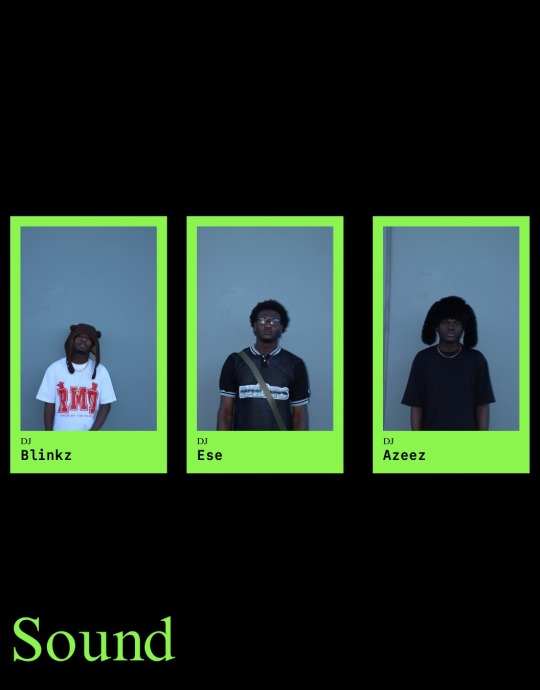








To all the attendees of Stacked Fashion Convention Vancouver, thank you for patronizing the event and coming to this edition.
To every production team member and collaborator, whether mentioned or not, your unwavering dedication is invaluable. Your passion and commitment brought the vision to life, creating unforgettable moments and leaving an indelible mark on all who attended. Thank you for your invaluable contributions and steadfast commitment to excellence.
And to you, the readers, thank you for taking the time to delve into my review. Your interest and engagement are greatly appreciated.
Signing out.
The messenger of peace,
Lotanna Uzomah
22 notes
·
View notes
Text
My thoughts on the 28 Years Later trailer
It totally makes sense for the island community to revert to pre-industrial technology. As someone who lives in farming country, tractors are fricking LOUD. Sure the survivors are on an island but sound carries across the water and all the infected have to do is come by during low tide. Maybe they stopped using gas-powered stuff before the fuel ran out due to sound attracting the infected.
There are shots of soldiers with modern guns and armor. That's VERY important cuz it implies there's a munitions factory still up and running, meaning there's an infrastructure of sorts still around. It also implies that enough people got a heads-up about the virus so they fortified some areas. Also also, there's a chance the military has gone full authoritarian like in The Last of Us but I'm really tired of that trope so maybe not.
A lot of people are asking how the infected could survive 28 years if they're so angry that they don't eat or drink. The tie-in comics (which I read) explain that the virus spread out in ripples, starting in the south of England before spreading north and west. This meant that England was mostly devoid of infected by the events of 28 Weeks Later but Scotland would still have healthy infected. Not to mention that viruses evolve with each host they infect, so there's this HUGE chance that enough infected evolved to remember to eat and sleep then taught the others to eat and sleep. Hell, they might've evolved to reproduce so people are BORN infected.
Lastly, the "Bone Temple," the person with a mask, and "Jimmy." Jimmy is the silliest name for a cult leader/warlord. It's like Immortan Joe's name. Jimmy is probably a violent ruthless leader tho. As cool as the temple looks in the trailer, temples take a lot of people and time to build, implying that SOMEONE (maybe Jimmy) was able to do 1 of 3 things: control the infected, hold back the infected, or was able to speedrun a cult of personality. Assuming the infected evolved, maybe this Jimmy fella made a deal with Big Boss Infected to protect his group by sacrificing a set number of people every year in the Bone Temple. To put my tinfoil hat on, we can guess that the evolved infected created a new religion and build the temple for their own mystic reasons.
#28 years later#28 days later#horror film#horror movie#cillian murphy#zombies#naomi harris#alex garland#danny boyle#28 weeks later#infected#the last of us#after the end#post apocalyptic#dystopian#scavenge punk#dystopic#dystopia#fan theories#28 yrs later#28 yrs l8r#aaron taylor johnson#ralph fiennes#rage virus#28 years later trailer#jodie comer
18 notes
·
View notes
Text
Erik Erikson’s Stages of Psychosocial Development
Evolving through Erik Erikson's stages of psychosocial development and reflecting upon them.
When I first came across Erik Erikson’s theory of psychosocial development, I’ll be honest—I didn’t expect it to hit me personally. It sounded like one of those academic concepts you memorize for a test and then forget. But the more I read about it, the more I realized that Erikson wasn’t just laying out stages of human development—he was describing all of us. Our fears, our triumphs, our inner conflicts. His theory helped me reflect on the different chapters of my life in a way that felt weirdly accurate.
So, what is Erikson’s theory all about?
Erikson proposed that as humans, we go through eight stages of psychosocial development over the course of our lives. At each stage, we face a specific conflict or challenge that shapes who we become. The outcome of these conflicts—whether we resolve them in a healthy or unhealthy way—directly influences our personality and sense of self.
1. Trust vs. Mistrust (Infancy)
This stage is all about whether we learn to trust the world around us, mostly through the care we receive as babies. If caregivers are consistent and nurturing, we develop trust. If not, mistrust can set in.
I obviously don’t remember this stage directly, but I do believe that the way we’re cared for early on creates a kind of emotional “blueprint.” For me, I’ve always had this underlying sense that things will somehow work out, and I think that might come from having a generally secure early environment. That kind of trust becomes the foundation we build everything else on.
2. Autonomy vs. Shame and Doubt (Toddlerhood)
At this stage, we start to assert our independence—learning to walk, talk, and say that infamous toddler word: no. If we’re supported, we gain confidence. If we’re criticized too much, we may start doubting ourselves.
I remember being a really independent kid. I always wanted to do things by myself—whether it was tying my shoes or pouring milk. Even now, I catch myself associating independence with self-worth. But Erikson made me think: maybe this isn’t just a personality trait. Maybe it’s a reflection of how I worked through this exact stage.
3. Initiative vs. Guilt (Preschool Age)
Here, kids begin to take initiative in their activities and play. Success leads to a sense of purpose, while constant criticism or overcontrol can lead to feelings of guilt.
Looking back, I definitely felt a strong desire to “do things right,” and sometimes I was overly cautious. I wonder if that early fear of messing up came from wanting to please others. Erikson helped me understand that it’s important to encourage curiosity and risk-taking in ourselves and others—not everything has to be done perfectly.
4. Industry vs. Inferiority (School Age)
This stage is where we begin comparing ourselves to others. School becomes a big deal. Kids who are encouraged and praised develop a sense of competence; those who struggle or are put down may start feeling inferior.
This one hit home. I was a good student, but I constantly compared myself to classmates who were “better” at something—sports, academics, popularity. Even now, I sometimes carry that feeling of not enough. Erikson’s framework made me see how deeply those early comparisons can stick with us, and how important it is to redefine success for ourselves.
5. Identity vs. Role Confusion (Adolescence)
This is one of Erikson’s most talked-about stages. Teens are trying to figure out who they are. Success leads to a strong identity; failure can lead to confusion about one’s place in the world.
Honestly? I’m still in this one. Or maybe I’ve just come out of it. Either way, this stage has been real for me—asking the big questions: Who am I? What do I believe? What matters to me? It’s overwhelming at times, but also kind of exciting. There’s a sense of freedom in not having it all figured out yet. But reading Erikson gave me permission to see that confusion is part of the process—it’s not a failure, it’s development.
6. Intimacy vs. Isolation (Young Adulthood)
This stage is about forming deep, meaningful relationships. If we’ve formed a clear identity, we’re more able to connect with others. If not, intimacy feels risky or impossible, leading to isolation.
This one’s unfolding in real time for me. Building close relationships—whether romantic or platonic—has been both beautiful and terrifying. Vulnerability is hard. But Erikson helped me realize that the work of knowing myself in earlier stages directly affects how open I can be with others now. Without a strong sense of identity, real intimacy becomes hard to sustain.
7. Generativity vs. Stagnation (Middle Adulthood)
In this stage, we want to feel like we’re contributing to something bigger than ourselves—through work, family, creativity, or mentoring. If not, we might feel stuck or unfulfilled.
I’m not quite here yet, but I see it in the adults around me. There’s a turning point where people either start building something meaningful—or they begin to feel restless, like life is just passing them by. I think that’s why I care so much about creating and learning even now. It’s a way of laying the groundwork for that future sense of purpose.
8. Integrity vs. Despair (Old Age)
The final stage. Looking back, people reflect on whether their life was meaningful. If they feel satisfied, they experience a sense of integrity. If not, they may feel despair over missed opportunities or unresolved regrets.
This stage gives me a weird sense of peace. Knowing that the choices I make now are shaping the story I’ll one day look back on—it’s grounding. Erikson’s idea of “integrity” isn’t about having a perfect life, but a meaningful one. That’s something I really hold onto.
What makes Erikson’s stages so powerful is that they’re not just about childhood—they’re lifelong. And they don’t happen in strict order either. We circle back. We revisit them. Sometimes we get stuck and have to go back to resolve an earlier conflict before moving forward.
This theory helped me realize that personal growth is a process, not a destination. It’s okay to still be figuring things out. It’s okay to feel a little lost, or stuck, or uncertain. That’s not a failure—it’s human development.
So, if you’re reading this and wondering where you “should” be, the answer is: exactly where you are. Growth doesn’t come from rushing through the stages—it comes from being honest about the one you’re in, and taking the time to do the work. Erikson didn’t just give us a theory—he gave us a map. And we get to walk it in our own time.
#erikerikson#social development#psychology#social psychology#book review#analysis#personal growth#mental wellness#mental health#stages of development
2 notes
·
View notes
Text


The Intersectionality of Queer Identity & Punk Rock
A Zine?
Yes, zine! Zines are like little pockets of subculture just waiting to be discovered. For me, they've been a constant source of fascination since my middle school emo days, when I first read Perks of Being a Wallflower. It was like finding a secret language, a way to express myself outside the mainstream. The Rocky Horror Picture Show and alternative music were my jam back then (and still are!) and discovering that zines could blend both worlds was utterly mind-blowing.
I delved deep into zine archives, soaking up inspiration from creators who came before me. I researched tirelessly, learning the ins and outs of zine-making, and honing my writing skills for the chance to contribute my own voice to this brilliant community. Suddenly, I had this platform where I could talk about everything I loved in one place. It wasn't just about sharing passions; it was about connecting with others who felt the same way, building a community of like-minded souls bound together by ink and paper. It was liberating!
Why did I choose this mode?
As stated before, zines bring together important conversations that people are passionate about. I am pulling from Perks of Being a Wallflower in the sense that I am bridging two concepts that are very close to my heart. As an as a self-described alternative queer man, I believe it is very important to remember where we came from, who came before us. This zine serves as an homage to the queer/alternative voices that came before me; however, this is not just for other queer or alternative individuals. This is for everyone. Regardless of politics, identity, or location, this zine is for you.
Where does Zine culture come from?
Zine culture, with its raw, unfiltered expression and grassroots ethos, finds its roots intertwined with the rise of punk music in the mid-1970s but can be traced all the way back to the early 1930s. Emerging as a response to the commercialization and homogenization of mainstream media, zines served as DIY platforms for individuals to share their thoughts, ideas, and creations in a tangible, accessible format.[x]
The DIY ethos embedded within zine culture finds its parallel in the punk movement. While previous musical genres such as skiffle and rock and roll also embraced DIY elements, it was punk that elevated the concept to a central tenet of its cultural and musical identity.[x] Punk rejected the polished, corporate-driven sound of mainstream music in favor of a raw, do-it-yourself approach that prioritized authenticity and individuality over commercial success.
In the face of state intervention and commercialization within the music industry, participants in alternative music scenes often embraced DIY as a form of resistance. By creating and disseminating their own zines, bands, artists, and activists asserted their independence from mainstream institutions and asserted their right to self-expression. This resistance was not merely a rejection of external forces but also a reclaiming of cultural autonomy and a celebration of DIY values.
Zine culture, therefore, emerges as a direct response to the limitations and shortcomings of mainstream media and culture. It represents a space where creativity knows no bounds, where voices that are often marginalized or silenced can find resonance and solidarity. In its simplicity and accessibility, zine culture embodies the spirit of punk's DIY ethic, offering a platform for self-expression and community-building that continues to thrive and evolve in the digital age.
Why are zines important?
Zines are vital conduits for self-expression, community building, and the preservation of alternative voices. Rooted in a rich history of resistance and creativity, zines offer a platform for individuals to share their thoughts, ideas, and creations outside the constraints of mainstream media. Emerging as a response to the homogenization and commercialization of traditional publishing, zines embody a rebellious spirit that champions authenticity and individuality.
Unlike glossy, corporate publications, zines are often cheaply made and readily accessible, democratizing the process of expression and inviting participation from individuals of all backgrounds. This accessibility not only empowers creators to share their stories but also fosters a sense of connection and camaraderie among like-minded individuals who share common interests and passions.
At its core, zine culture is about more than just printing; it's about building community and amplifying marginalized voices. By creating and sharing zines, creators forge connections with readers, sparking conversations and collaborations that transcend geographical boundaries. Zines serve as historical and cultural artifacts, documenting the experiences and perspectives of diverse communities, ensuring that alternative narratives are preserved and celebrated. In a world where mainstream media often overlooks or silences marginalized voices, zines offer a space for these voices to be heard, valued, and embraced.
The Basics
A subculture refers to a distinct group within a larger society that shares a set of beliefs, values, practices, and interests that deviate from mainstream culture. Subcultures are born out of a variety of social, cultural, and historical factors, often as a response to the perceived limitations or inadequacies of mainstream society. Dissatisfaction with societal norms and values can lead individuals or groups to seek out alternative spaces where they can express themselves authentically and find like-minded peers.
Subcultural groups often draw inspiration from existing cultural forms, such as music, fashion, art, and literature, which they reinterpret and repurpose to reflect their own distinct identities and sensibilities. This process of reclamation allows subcultures to create new meanings and symbols that resonate with their members, contributing to the evolution and diversification of subcultural identities.
Why punk?
In "Visual Vitriol" by David A. Ensminger, the author encapsulates the essence of punk rock as a refuge for those seeking a space to express themselves authentically. He reflects on the allure of punk, suggesting that many are drawn to it for the opportunity it provides to embrace a queer or unconventional identity comfortably. The quote from "INSIDE FRONT #13" captures this sentiment, highlighting punk as a haven for those who feel alienated from mainstream culture, offering a platform for self-expression without judgment.
Ensminger also acknowledges the significant influence of the LGBTQ+ community within punk. He asserts that "Gays shaped both the looks typifying punk and the history of punk music," recognizing the pivotal role of LGBTQ+ individuals in defining punk's aesthetic and its evolution as a cultural movement. This acknowledgment underscores the profound impact of queer individuals on the visual and musical elements that have become synonymous with punk. In essence, Ensminger's summary portrays punk not only as a musical genre but also as a cultural space shaped by and for those who seek to challenge societal norms and celebrate their identities openly.[x]
Punk 101
Punk rock emerged in the mid-1970s as a raw, energetic, and rebellious response to the perceived stagnation and commercialization of mainstream rock music. Its roots can be traced back to earlier musical movements such as garage rock, protopunk, and glam rock, which laid the groundwork for the aggressive, stripped-down sound that would later define punk. Bands like The Velvet Underground, The Stooges, MC5, and New York Dolls contributed to the development of this new musical aesthetic, characterized by its simplicity, urgency, and confrontational lyrics.
The early punk scene in New York City, centered around clubs like CBGB and Max's Kansas City, saw the emergence of pioneering bands like Ramones, Blondie, Talking Heads, and Patti Smith. These artists rejected the polished, virtuosic style of mainstream rock in favor of a do-it-yourself (DIY) ethos and a more direct, unfiltered approach to music. Meanwhile, across the Atlantic, a parallel punk movement was taking shape in the United Kingdom, spearheaded by bands like Sex Pistols, The Clash, The Damned, and Buzzcocks. Fuelled by a sense of disillusionment with the social and political climate of the time, UK punk bands captured the attention of disaffected youth with their raw energy and provocative lyrics.
Ensminger’s analysis that highlights the significant influence of the LGBTQ+ community within punk, recognizing their pivotal role in shaping the genre's aesthetic and cultural evolution. Punk provided a refuge for those seeking to express themselves authentically, including queer and unconventional identities. This acknowledgment underscores punk's broader significance as not just a musical genre but a cultural space where individuals could challenge societal norms and celebrate their identities openly.
Punk rock had a profound impact on music, fashion, and culture at large. Its influence can be seen in subsequent genres like hardcore punk, post-punk, and alternative rock. Punk's DIY ethic and spirit of rebellion continue to inspire artists and activists around the world, reminding us of the power of music to challenge the status quo and amplify marginalized voices.
What about Riot Grrl?
Isaacson's analysis reveals Riot Grrrl's enduring legacy of empowerment and activism, demonstrating how its in-fluence resonated across subsequent generations of punk and Queercore artists. Riot Grrrl's ethos of self-expression and collective action inspired a new wave of feminist and queer activism within punk and beyond, shaping the cultural landscape and providing a voice for marginalized communities.
The problematic past of punk history
The problematic past of punk, as explored in "Cultural Criminology" by Jeff Ferrell and Clinton R. Sanders, sheds light on the complex relationship between subcultures, societal norms, and the criminal justice system. While punk emerged as a form of resistance against societal constraints, it also harbored elements of extremism and prejudice, particularly evident in its association with neo-Nazi skinheads.[“Subculture, Style, and Crime.” Cultural Criminology, 1995]
The evolution of punk, like many other musical genres, began as a grassroots expression of resistance by marginalized groups within the political-economic system. Ferrell and Sanders emphasize that punk's origins lie in the struggles of young people with limited resources, echoing a sentiment of rebellion against societal oppression. However, as punk gained mainstream attention, certain factions within the subculture, such as neo-Nazi skinheads, emerged, espousing inflammatory and prejudiced ideologies.
Moreover, Ferrell and Sanders note the paradoxical nature of punk's evolution, where expressions of resistance can become sanitized and marketable to mainstream audiences over time. While punk initially served as a platform for marginalized voices to challenge societal norms, its commodification and mainstream success have sometimes diluted its original rebellious spirit.
What is “Queercore?”
Viva la resistance!
"Queercore: How to Punk a Revolution," directed by Yony Leyser and featuring performances by notable figures such as John Waters, Kim Gordon, and Bruce La Bruce, is a documentary that delves into the history and ethos of the Queercore movement. Released in 2017, the film provides a comprehensive look at this subculture that emerged within the punk rock scene as a form of queer ex-pression and resistance. [Leyser, Yony, director. Queercore: How to Punk a Revolution. Totho Productions, 2017]
The documentary explores how Queercore arose in the 1980s as a response to the lack of representation and visibility of LGBTQ+ individuals within both mainstream society and the punk scene itself. It showcases interviews with key figures who were instrumental in shaping Queercore, shedding light on their motivations, struggles, and achievements. Through their stories, the film captures the spirit of defiance and creativity that defined Queercore, challenging societal norms and advocating for queer liberation. [x]
D. R. DeChaine's article "Mapping subversion: Queercore music’s playful discourse of resistance" provides an insightful exploration into the world of Queercore, shedding light on its history, identity politics, and subversive nature within the punk rock scene. The article delves into how Queercore emerges as a fusion of punk rock music and queer politics, embodying punk's rejection of mainstream commercialism with its fast, raw sound and DIY ethos. It emphasizes the politically charged nature of Queercore, where artists use sexually explicit and often vulgar lyrics to challenge societal norms and express a culture that defies mainstream conventions.[x]
A key theme is the role of “play” within Queercore, offering participants a space to resist and subvert dominant cultural narratives. This play is not just recreational but empowering, providing temporary liberation from the oppressive ideologies of mainstream culture. DeChaine highlights the historical silence around homosexuality in music, pointing to the challenge of connecting queer and punk discourses due to this silence.
In Ambrosch's exploration of gender, feminism, and queer identity within punk culture, "'Refusing to Be a Man': Gender, Feminism and Queer Identity in the Punk Culture" delves into the subversive nature of punk as a reaction to the 'rock machismo' prevalent in the 1970s. From its inception, punk has challenged heteronormative notions of gender and sexuality, with first-wave artists intentionally blurring boundaries. Ambrosch highlights bands like Bikini Kill and Crass as exemplifying an intersectionality and blurring of gender boundaries by first-wave punk artists and their exploration of nonmainstream gender identities.[x]
The author explores the evolution of the term 'punk,' tracing its origins from Shakespearean times to its later connotations of 'young male delinquent.' This linguistic history mirrors punk's rebellious spirit and its embrace of non-mainstream identities. Punk, according to Ambrosch, fosters an environment for challenging established norms, including gender and sexuality, with bands since the late 1970s addressing these issues.
However, Ambrosch also critiques punk's gender dynamics. Drawing on Sharon Cheslow's insights from Chalk Circle, the author discusses how male anger is often romanticized in punk, while female anger is viewed as threatening. Men tend to dominate cultural spaces within punk, making it challenging for women and LGBTQ individuals to fully participate.
Queercore Bands
"QUEER AS PUNK: Queercore and the Production of an Anti-Normative Media Subculture" by C. Nault, published by Routledge in 2013, offers a comprehensive examination of the Queercore movement and its role in creating an anti-normative media subculture. This book delves into the origins, development, and significance of Queercore as a subversive force within both the punk rock scene and broader LGBTQ+ culture.[x]
Nault's work highlights how Queercore emerged in the 1980s as a response to the marginalization of LGBTQ+ individuals within punk and mainstream media. The book explores the ways in which Queercore artists used music, zines, and other forms of media to challenge heteronormativity and traditional gender roles. By rejecting assimilation and embracing radical self-expression, Queercore became a platform for marginalized voices to be heard.
The author discusses key figures and bands within the Queercore movement, such as Tribe 8 and Pansy Division, who used their music and performances to confront societal norms and address issues of sexuality, gender identity, and politics. Nault also examines the impact of Queercore beyond its music, delving into its influence on art, literature, and activism.
Problematic Queercore Bands
Without naming any specific bands or groups, I think it is important to acknowledge the problematic side of Queercore. Just like punk rock, Queercore has its controversial and horrific sides. I believe it is crucial to acknowledge problematic Queercore bands as their actions and behavior can have significant consequences for the LGBTQ+ community and the broader punk scene. By shining a light on these issues, we can address harmful behaviors, challenge oppressive attitudes, and work towards creating safer and more inclusive spaces within the scene.
Acknowledging problematic behavior within Queercore bands helps hold them accountable for their actions. These bands may espouse values of inclusivity and acceptance, but if their actions contradict these principles or perpetuate harm, it's essential to call attention to it. Holding individuals and groups accountable for harmful behavior sends a message that such actions will not be tolerated and helps protect vulnerable members of the community. This allows for conversations about power dynamics, privilege, and accountability within the LGBTQ+ community itself. Just because someone identifies as queer does not absolve them of responsibility for harmful actions.
Being queer does not inherently make you anti-racist. Being queer does not inherently make you anti-fascist. Being queer does not inherently make you a feminist. Being queer does not inherently make you a person with good values.
Into the Mainstream
Despite the flaws of individual figures within the movement, Queercore's presence in the mainstream contributes to greater visibility and acceptance of LGBTQ+ identities. Just as Oscar Wilde's contributions to queer literature remain significant despite his personal flaws, Queercore bands play a vital role in amplifying queer voices and experiences. Their presence challenges mainstream narratives and provides a platform for LGBTQ+ individuals to express themselves authentically.
Queercore as Resistance
Queercore embodies a defiant rejection of mainstream expectations and norms regarding gender and sexuality. Its very existence challenges the notion that queer identities should be hidden or marginalized, instead asserting the right to visibility and self-expression.
At its core, Queercore disrupts dominant narratives by amplifying queer voices and experiences. Through music, zines, art, and DIY activism, it provides a platform for individuals to express their identities authentically, free from societal constraints. This radical self-expression is inherently political, challenging the status quo and demanding recognition and acceptance for all sexual orientations and gender identities.
Queercore's resistance is multifaceted, extending beyond the realm of culture and art to encompass social and political activism. It confronts discrimination and violence against LGBTQ+ individuals, advocating for equal rights and protections under the law. Through grassroots organizing and community building, Queercore fosters solidarity among marginalized communities, amplifying their collective voices in the fight for justice and liberation.
Moreover, Queercore serves as a form of cultural resistance, reclaiming spaces traditionally dominated by heteronormative and cisnormative narratives. By creating inclusive and welcoming environments within the punk and DIY scenes, it challenges exclusionary practices and fosters a sense of belonging for queer individuals. In doing so, Queercore disrupts hegemonic power structures and asserts the right to exist unapologetically in all spaces.
Queercore's resistance is both personal and collective, challenging oppression at individual, societal, and systemic levels. By embracing radical self-expression, advocating for social change, and reclaiming cultural spaces, Queercore stands as a defiant assertion of queer identity and autonomy in the face of adversity.
What’s in it for me?
Haha, get it? Ah, it’s a Queercore joke. Pansy Division? Anyways… Queercore extends further than just the queer community, it embraces feminist and BIPOC intersectionality while providing a platform for marginalized voices. In the face of ongoing discrimination and violence against LGBTQ+ individuals in America, Queercore serves as a beacon of resistance, advocating for social change and celebrating diversity.
At its core, Queercore challenges the heteronormative and cisnormative structures pervasive in society. It disrupts traditional narratives of gender and sexuality, offering a space for individuals to explore and express their identities freely. This liberation extends to feminist and BIPOC perspectives, acknowledging the intersecting struggles faced by marginalized communities. By amplifying diverse voices, Queercore dismantles oppressive systems and paves the way for intersectional solidarity.
In America, anti-LGBT sentiment remains a pervasive force, manifesting in various forms of discrimination, violence, and legislative attacks on queer rights. Queercore confronts this hostility head-on, advocating for LGBTQ+ visibility and empowerment. Through music, zines, and DIY activism, it challenges societal norms and demands recognition and acceptance for all sexual orientations and gender identities. By rejecting assimilationist tendencies and embracing radical self-expression, Queercore asserts the right to exist unapologetically in a hostile environment.
Furthermore, Queercore serves as a bridge between queer and straight/cis communities, fostering understanding and empathy across divides. It invites allies to participate in the struggle for LGBTQ+ rights, recognizing that liberation requires collective action. By creating spaces that welcome individuals of all identities, Queercore promotes dialogue and mutual support, challenging stereotypes and fostering solidarity. Queercore isn't just for queer people; it's for everyone committed to building a more inclusive and equitable society.
#queercore#punk#punk rock#gay#lesbian#bisexual#transgender#bi#lgbt#lgbtq#lgbtqia#essay#anti transgender#helpful critics welcome#protect trans people#protect trans youth#queer#queer community#lgbtq community#lgbt pride#zine#zine adjacent#this is for a class#there is a super cool cover#but tumblr is not set up for zines#because its tumblr#alt#alternative#long post#in progress
16 notes
·
View notes
Text
The slugcat drops into the can and starts sniffing around…

DA: oh! My you are quite the curious creature
Ech slowly approaches, placing himself between tempest and Aqua, sniffing at them
DA: do not worry, Ech is tame
It pauses, inspects Ech, before continuing its search
DA: what are you looking for friend? Are you looking for the other green creature? Are you friends? Family?
It looks up at her
T: Have you seen it?
Aqua looks surprised, bouncing back slightly
DA: you can speak?!
T: yes, now have you seen the 'green one', it's trail seems to end here.
Aqua moves over, picking Tempest up and inspecting them, she holds them in a gentle restraint, not trying to hurt, but not letting them go either
DA: oh my stars this is unprecedented! How on earth did you learn this? Is it a mark of some kind or has your species evolved? No wonder the other one was so hell bent on getting here!
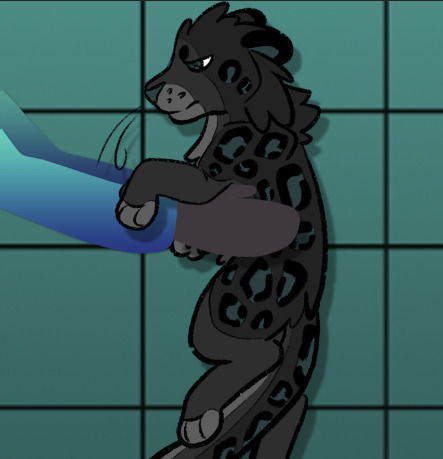
Tempest squirms in her arms
T: hey-! Put me down, I am not some pet! I have an important job to do-!
she places them down
DA: oh I am - I am sorry, I am not used to visitors and suddenly all this? I - I got ahead of myself. My name is Deep Aquarium, what is yours?
T: Tempest. Now can we get back to business, we do not have time for chit chat. The green creature, where'd it go from here?
she furrows her brow
DA: I - I do not remember… my structure, my memories - Your friend must have left during a structure failure of mine. Come to think of it, one of my leviathans also went missing recently, somehow ended up in twisting weave, near the industrial zone … poor thing. Why are you looking for them?
T: It's a dangerous creature, and I'm charge of stopping it before it does more damage.
DA: more … ? You are not saying that it was the one that killed Epithet, are you?
T: Ascension is our job. I'm just here to fight fire with fire.
DA: Our? Oh no no no no I am so sorry please do not kill me - I am not ready please!
T: relax. I do not intend to follow in its footsteps that closely.
DA: I - I need to tell Shadows about this
T: sure, whatever, just… I need a ride down South. Can you do that?
DA: I can, but not along the direct path that was taken before, my missing leviathan still has not returned and I do not want to lose another
#gbn rp#rw ask blog#rain world#rain world askblog#rain world downpour#rain world oc#rw downpour#rain world fanart#rain world iterator#rw iterator#rw art#oc roleplay#rain world art#rain world slugcat#rw au#rw slugcat#slugcat#rain world iterator oc#iterator oc#iterator rain world#iterator#rain world original character#rw design#rw designs#iterator logs
7 notes
·
View notes
Text
Iconic & Notable Eurovision Performances
In 1956 the European Broadcasting Union launched “Grand Prix Eurovision de la Chanson Européenne” or in English, the Eurovision Song Contest Grand Prix, as a way to test and launch international live broadcasting. It also became a way to unite the countries together after the chaos of World War II ended in 1945.

The initial format for the contest based on the Italian music festival “Sanremo”. Active members of the EBU and various other associates are invited to participate in the show. The most notable ones are France, Germany, the UK, Spain and Italy. These countries are known as the Eurovision's “Big 5” and make the most notable financial contributions to the EBU. Over the years Eurovision has evolved and is now the longest running international contest that is televised.
Despite its huge success, Eurovision has had its fair share of backlash and hatred thrown its way, some people think the music broadcasted on the show isn't good, and that the show is only using art as a way to profit from it. Others say that it’s too long and cringeworthy. In recent years politics has become the main reason for peoples disdain towards the contest, with Russia invading Ukraine in 2022 being a huge part of the contest to as recently 2024 where many performers spoke out in support of Palestine.
But regardless of all this, the impact the show has is undeniable, I’ll be taking a look into a few of the most impactful and noticeable performances from the competition. Some of these are winners of the contest, and some are not. To be clear, these are just what I personally feel are important Eurovision performances.
You might disagree, and that's okay
Refrain - Lys Assia (Switzerland 1956)

1956 was the first year of the competition and the only year where countries could have two entries, and Lys Assia sang both songs that were chosen to represent Switzerland; “Refrain” which was originally sung in French & “Das alte Karussell” (The Old Carousel). Originally sung in German. Since the voting was kept secret, it's unclear where Switzerland's second entry placed in the competition.
Refrain is a chansen style song that is about lamenting the loss of adolescents and youth. It was composed by jazz pianist and composer Géo Voumard and written by Émile Gardaz, a swiss author.
Lys Assia was still involved in the Eurovision even after her iconic win. She performed at the 50 year anniversary show in 2005, and also presented the winning trophy in 2009. She even attempted to enter the competition again in 2013, but didn't qualify.
She passed away in 2018 but is still remembered for her bittersweet performance of “Refrain”.
Waterloo - Refrain (Sweden, 1974)

Abba could arguably be the most successful participants of the contest to date, you can say you don't listen to them, but you certainly know who they are whether you remember them from their work on the soundtrack of “Mama Mia!” or for this iconic entry that marks the first of Sweden's seven victories.
The group was formed in 1972 when 2 married couples combined their talents together,Despite not being very well received by Swedish audiences, the group had some moderate success before the competition, releasing songs and playing at festivals around sweden.
They entered the Melodifestivalen (Sweden's way of picking their Eurovision entry) in 1973 with their song “Ring Ring” but didn't qualify, afterwards the band began working on their entry for the following year as they saw the potential the contest had to launch the group into the industry, and to open themselves up to an international crowd. since then the band have skyrocketed, having received many Grammy nominations and even winning various awards such as a Brit award and the AGVA's Vocal Entertainer of the Year award in 1981.
Dana International-Diva (Israel, 1998)

The 1998 Eurovision was a huge moment for LGBTQ+ representation, as it was the first time in the competition an only transgender person would compete and also win the competition.
Yaron Cohen, known also as “Dana international” began her career in 1987 as a drag queen and had her first notable success when she launched a satirical version of Whitney Houstens “My Name Is Not Susan”. She legally changed her name and underwent gender affirming surgery in 1993 and took on the stage name “Dana international”
She first entered the Eurovision Qualifying Contest for Israel in 1995, as it had been a childhood dream to compete, but her entry for the year came second in the preselection. She would go on to release an EP and album in the following years before being chosen in 1998 to represent Israel in the 43rd year of the contest's runtime.
Despite huge backlash from conservative communities in Europe, Dana overcame all of the pushback and took home the trophy with her song “Diva”. A song praising many strong powerful women throughout history.
Many orthodox jews were opposed to her presence in the contest and she received a lot of death threats. This entry was the first time a Trangender person had not only been seen on the contest stage but had also won the show, making it a huge celebration for the LGBTQ community.
Conchita Wurst - Rise Like The Phoenix (Austria,2014)

2014 was another memorable/controversial time for the contest, Austria's chose to send a drag artist as their entry for the 58th Eurovision. This made her the first drag artist to take the stage, as well as being the first artist to perform on the stage without backing vocals or dancers.
Conchita Wurst, real name Thomas Neuwirth, is a drag artist and performer originally from Styria, Austria. Before taking on the persona of “Conchita Wurst” Neuwirth competed in an austrian talent/scouting show in 2006 and finished third, later he would go on to form a boy group known as “Jetzt Anders!”, the group would disband later the same year
It was after this he developed the persona of “Conchita Wurst” and would go on to place second place in the Austrian Eurovisons selections for 2012. Two years later she would be selected to represent Austria in the 2014 Eurovision contest with the song “Rise Like A Phoenix”, a powerful ballad about overcoming difficulties.
Her presence and success sparked a lot of controversy among viewers, with a lot of more conservative groups taking great offence to the performer's presence. Some countries even went as far as to create and sign petitions to have the performance excluded from the broadcast. This controversy highlighted the ongoing disagreement between Eastern and Western Europe on homosexuality, but her win once again shone a positive light onto the LGBTQ+ community.
Sandra Kim - J'aime La Vie (Belgium,1986)

Belgium's Sandra Kim (real name; Sandra Caldarone) became the youngest person to compete and win the competition in 1986 at only 13 years of age.
Born in Montegnee in Belgium, Kim started singing when she was only seven years old. In March of 1986, she won the national selections and performed at the 30th Eurovision Contest held in Norway and took first place for Belgium making it their first and only win so far.
The song “J’aime La Vie” is an upbeat bubblegum pop song about the joys of life and living, though at the time the song made Kim appear to be 15 years of age. Once her real age had been revealed the Switzerland began a petition to have the song disqualified from the contest. After this all a rule was brought in that all contestants had to be over 16 to compete (at least on the day of the Finals)
Dave Benton, Tanel Padar & 2XL - Everybody (Estonia, 2001)

Dave Benton made history by being not only the oldest person to claim victory at the contest, he was also the first person of colour to win the show. The performance is Estonia's first and only win to date in the competition, which also makes it the first of the Baltic states to take home the title.
Born in 1951 on the Caribbean island Aruba, He moved to the US and performed as a backing vocalist and drummer for many artists. Afterwards, Benton would move to Estonia after marrying his wife in 1997. He has had a broad musical career partially due to his ability to speak 8 different languages. He has also had career in acting appearing in films "The Dissidents" and "Infinite Summer".
The win was a shock as Estonia didn't place in the top 10 of oddsmakers and betters.
Despite the song's victory, it was not immediately available as a single and could only be found as part of a compilation album released by BGM Germany. Dave Benton initially declined to perform on the song, but changed his mind a few days later when asked again.
Paul Oscar - Min Hinsti Dans (Iceland, 1997)

In 1997, Pall Oskar Hjalmtysson (more commonly known as Paul Oscar) joined the international spotlight as the first openly gay man to perform in Eurovision. Having already had national success, he was chosen to represent his home country of Iceland at the 42nd iteration of Eurovision hosted in Dublin Ireland.
Born in 1970, Oskar was a very musical child, singing and performing a lot, but was deeply affected by bullying in school. This only worsened when at the age of 16, he came out to his family as gay. In 1993 he released his album “Stu “ he soon after joined the band Milljónamæringarnir and released 2 albums with them, in 1995 he began his solo debut with the album “Palli” released under his own recording company. It went on to be the best selling Icelandic album of that year.
He co-wrote and performed the song “Minn Hinsti Dans” representing Iceland, the performance featured four women performing with him latex acting suggestive on a sofa, while the performance only placed 20th in the semi finals, it captured the attention of viewers for its boldness, particularly among the LGBTQ audience.
Lordi - Hard Rock Hallelujah (Finland, 2006)

The audience of the 51st iteration of Eurovision got quite the shock when Finnish metal band Lordi took to the stage with their song “Hard Rock Hallelujah”. The band are known for their extravagant monster outfits and are even known as “the Finish monsters”. The band would be crowned winners and take home Finland's first and only victory in the contest.
The band originally formed in 1996 after meeting at a KISS concert the year before. They knew early on they wanted to perform with crazy pyrotechnics and be dressed as different monsters. The costumes are heavily inspired by KISS and Horror elements. The band are never seen without the masks on, no matter what.
Up until this time, the songs in the contest were more predominantly europop, pop or ballads. heavier and alternative genres were not seen in the contest until Lordis performance. Many called the group devil worshipers. In fact, a group of Greek priests were certain the band were satanic and told Kerrang magazine the group wasn't welcomed in the country.
Despite this Lordi’s performance opened the doors of Eurovision for more non mainstream artists, their win and performance have had a huge impact on the way people would perceive the contest. And undoubtedly paved the way for other non mainstream artists to succeed in later shows.
Joost Klein - Europapa (Netherlands, 2024)

This years eurovisions had a lot of really notable performances, some for good reasons, some for more controversial, I found it hard to pick one to talk about, but felt i needed to mention this years contest due to everything surrounding it, and I think the story of Joost Klein makes the most sense to mention.
Despite many viewers choosing to boycott the show this year due to Israel's presence amidst the political climate, “Europapa” took the world by storm and spread like wildfire over social media. It was exactly the type of song you’d expect at Eurovision, an upbeat techno song about loving Europe and needing to come together during tough times. with wild and quirky stage production.
The sentiment of needing to unite against hate was incredibly strong this year, with many performers voicing the same message in their shows. but Joost’s stage charisma and established popularity as a dutch performer made him stand out amongst the rest. Making his sudden disqualification from the contest a huge shock.
After qualifying for the grand final, a female camera woman claimed Klein allegedly made threatening remarks towards her, and after an investigation into these claims, the EBU released a statement disqualifying Joost from the final. Many fans were shocked by the news as it's the first time an act has been disqualified from the contest.
Since then, speculation around the EBU’s decision has mainly centered around a prior incident during a press conference between Klein and Eden Golan, the Israeli representative. During this event Klein would not make eye contact with the Israeli singer, and when she was questioned on if her presence at the contest was a safety issue. Golan refused to answer but Klein pushed back, adding he felt she should.
Joost's disqualification added even more tension to the contest this year, especially with ongoing outcry for the EBU to take a firmer stand on Israel. With the 2025 Eurovision already scheduled to take place in Basel, Switzerland, many fans will be waiting to see whether Israel will be cut loose from the competition or if History will be repeating itself.
#eurovision song contest#eurovision#conchita wurst#dana international#joost klein#sandra kim#dave benton#lordi#lys assia#paul oscar#diva#abba#EBU#waterloo#tanel padar
6 notes
·
View notes
Text
















World Television Day
For those of us who grew up in the western countries, the television is almost taken for granted; it has always been there in the corner of the front room, entertaining us with bright colors and sounds, or satisfying our need to learn something new. The television, invented by an assortment of individuals in the late 19th and early 20th century, but often attributed to John Logie Baird, has revolutionized the world.
For the first time moving images could be adequately projected from around the world into the homes of ordinary people, bringing a new level of access to information and entertainment previously only dreamed of. The social and political changes brought about by this innovation were so profound that it was decided to appreciate the medium formally, on a global scale.
The first World Television Forum was staged by the United Nations in the mid ’90s, and it was out of this event that World Television Day was born. The forum brought together leading figures from the media industry to analyze the growing impact that TV had on decision-making and public opinion when it comes to issues of peace and security around the planet.
History of World Television Day
In December 1996 the United Nations General Assembly proclaimed the 21st of November World Television Day, the same year the first World Television Forum was held. According to the United Nations, this decision was taken in order to give recognition to the increasing impact television has had on decision-making by bringing various conflicts and threats to peace and security to the world’s attention, as well as its coverage of other major issues, including economic and social.
Prior to this people received information via radio broadcasting, if a household was equipped with a transistor radio, and the newspapers. Early television broadcasts followed the same format as radio, with a man reading a simple bulletin on a black and white screen. The technology however soon evolved to include images of events and interviews with people. The monochrome style was abandoned when color technology was developed in the mid to late sixties, and TV technology continues to advance with evermore sophisticated optics and digital enhancements.
However, World Television Day is not meant to be so much a celebration of the electronic tool itself, but rather of the philosophy which it represents–a philosophy of openness and transparency of world issues. Television has long been thought to represent communication and globalization in the contemporary world, but not all of the government representatives present saw matters quite that way.
The delegation from Germany said, “Television is only one means of information and an information medium to which a considerable majority of the world population has no access… That vast majority could easily look at World Television Day as a rich man’s day. They do not have access to television. There is more important information in the media and here I would mention radio in particular.”
Despite this understandable objection, the television has still been an instrumental innovation for humanity, in the same category as the printing press, radio communication, and the internet. World Television Day is a chance for us to appreciate not only the extraordinary technological ingenuity of the scientist and engineers who made seemingly impossible things happen but also to understand the social and cultural implications that such a unifying medium has had on our global communities.
The internet has connected us in ways we didn’t expect and perhaps could not have imagined, but on World Television Day we remember that television was there first, and paved the way for what was to come.
How to celebrate World Television Day
The most obvious way to celebrate World Television Day is by watching television. But what? Surely not vulgar reality shows offering little to no value of any kind to their audience? World Television Day is a time to rewatch and relive some of the greatest moments of television that helped bring the reality of a rapidly technologically advancing world into people’s homes, forever changing their lives and how they perceived the world.
1954 marked the launch of Disney’s “Wonderful World of Color”, a family-friendly variety program that mixed iconic cartoons, drama and documentary programming. The very first televised presidential debate between Republican Vice President Richard Nixon and his challenger, relatively unknown Massachusetts Senator John F. Kennedy in 1960 changed the presidential elections forever.
For the first time ever, American voters actually saw the candidates present their ideas, which worked greatly in favor of the young and handsome Kennedy, who went on to win the election. And few moments, if any, in television history could ever surpass Neil Armstrong, Michael Collins and Ed “Buzz” Aldrin’s moon landing in 1969, which many people consider to be a pivotal moment in their lives until this very day–after that, nothing was going to be impossible again.
World Television Day was established as a way of bringing the focus back to these issues on an annual basis. In years gone by, major TV stations have come together on the day to broadcast tributes to the importance of television in people’s lives. The obvious way for anyone to celebrate is to turn on their TV and watch.
But you don’t have to rely on broadcasting networks to bring you ideas of what to watch on World Television Day. These days our television sets are also internet compatible, allowing us to access a range of content suitable to our specific interests, whether they be educational or for entertainment value. It’s easy to use your television set to look up a historical documentary giving you a window into the past or choose a cultural figure who was influential in her time and changed the world in some way. In doing so you will be in keeping with the true purpose of television media, to educate and inspire.
But if you would rather be entertained, why not select a classic film from the Hollywood archives and imagine you are watching it for the first time, as a member of the original audience. Feeling adventurous? Go all out and dress up in period costumes as well, turn World Television Day into an annual event that you and your friends can enjoy planning months in advance.
Those that want to become more involved and have ideas about how to honor the day are welcomed to send their thoughts to the official website.
Source
#Sweden#World Television Day#TV#travel#Seeheim-Jugenheim#Germany#AirBnB#WorldTelevisionDay#L'Hotel#Montréal#Sofitel Philadelphia#Revelstoke#USA#Canada#summer vacation#interior#Le Saint Pierre Auberge Distinctive#Québec#Quebec City#original photography#Toad River#vacation#Bellagio - Las Vegas Luxury Resort & Casino#21 November
3 notes
·
View notes
Text
What I did on my summer vacation
As you've no doubt gathered by now, for the last two years I've been playing various old games with my wife. I often used to post about that adventure here, and then I kinda stopped. I feel bad about that, especially when it comes to the two excellent, free indie games I had fully intended to spotlight. So here's a quick rundown!
Celeste, OJONMRAG, Double Cross
Three great indies I got in the same bundle. Celeste needs no introduction, and I've spoken about it before. I don't know if I ever mentioned Oh Jeez Oh No My Rabbits Are Gone!!!, but it's a fun puzzle game with cute visuals and surprisingly catchy music. And speaking of those two things, Double Cross is a hidden gem of a game. We really enjoyed its eclectic cast, and still sometimes quote the zany catgirl in particular. ("All cats are tyrants, Zahra.")
Manic Miners
Lego Rock Raiders was a toy line in the 1990s, which earned its own video game tie-in. I remember it fondly... as did one absolute hero, who remastered the dang thing as a non-profit passion project. Manic Miners is available via Itch for free - because it's a fan game! He had to ask very nicely to do this at all! - and it completely revitalizes what was an engaging but flawed fuzzy memory from my childhood. As well as adding several quality of life improvements to make the game flow better, cut content is restored and entirely new features are added in, such as a character creator. If you want an accessible game that can provide the sweet, sweet satisfaction of collecting every scrap of resources from a initially messy environment, I highly recommend this.
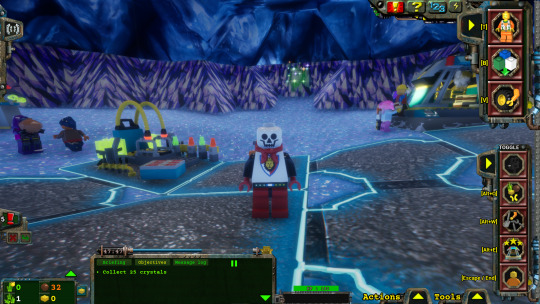
inFamous 2: Festival of Blood
An important thing to know about me is that I hate vampires. I don't like 'em and I don't like looking at 'em, so I usually avoid and and all vampiric media, even if they're getting slaughtered. For that reason, despite loving inFamous 2, I never checked out its DLC side-adventure Festival of Blood... until now. (Making a new purchase on the PS3 digital store was hard, but not impossible. Thanks for complaining every time they try to shut it down, everybody!) It's a short experience, but a lot of fun, thanks to the wise decision to let Zeke narrate the whole bullshit stor- I mean, thrilling tale of true heroism. I found Bloody Mary to be an entertainingly nasty villain, despite my biases.
Psychonauts 2
Psychonauts is one of the video games ever, no question. Expectations were lofty for its much-delayed sequel. If anything, I think I prefer this one! The core (the gameplay, visuals, hilarious writing, and Peter McConnell's consistently excellent music) all remain unchanged, with new mechanics, some quality of life improvements, and an impressive voice cast all added on top. Jack Black and Elijah Wood are both in this game, and they're both great!
Pokémon White
this one kinda sucked ngl
Halo: Combat Evolved
Mostly, I'm showing my wife a game and not the other way around. There was one major franchise that I had almost entirely missed, however - aside from a few free-form skirmishes at parties - that she fondly remembers. This summer, we both experienced the first Halo together, and in short: yeah, I can see why this changed the course of the industry singlehandedly. It still feels great to play, even with my wife assuring me that the sequel is a big improvement from these already solid bones. I frankly don't relish slaughtering the fleeing, crying Grunts, since we as a society have moved on considerably when it comes to the rights of funny little guys. But it feels great to shoot aleins and Cortana is my friend. Exactly as advertised.
Jak II: Renegade
this one definitely sucked, holy shit. I remember this being a good game. I remembered incorrectly.
Shantae (2002)
I've played two of the more recent Shantae games, and I found them charming. But how does the original hold up? Pretty well, honestly! It's far from perfect - the day and night cycle really adds nothing beyond referencing Castlevania - but the music and visuals are truly impressive for the original GameBoy. I'm gonna be thinking about Shantae's cute little 8-bit dances for a while.
Undertale Yellow
Like anyone who listens to a lot of Toby Fox's music over YouTube, I've seen my fair share of dubious OCs and "epic fights" floating at the corner of my vision. With that in mind, I went into UY with managed expectations, despite the positive buzz. Could a fangame really match the unique energy and charm of one of the greatest independent games of our generation?
Uh... yeah! I'm as surprised as anyone else, but everything from the music to the gameplay to the writing was really bang-on. It's not a flawless experience - the El Bailador fight needed reworking, it was WAY harder than other, more impactful fights - but the eight years of passion very much shine through. If you're a fan of UT/DR and need something to tide you over as we all wait for Chapters 3+, I fully recommend this. It's free!!!!
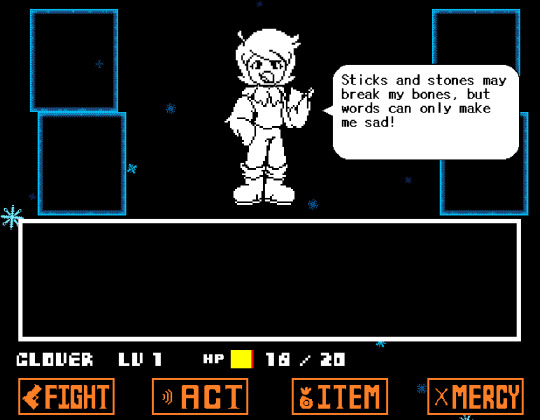
Spyro the Dragon (1998)
Finished this just yesterday! I got the remaster when it came out, but - no offense - nothing beats the blocky low-poly charm of the original. This was my first time replaying it in several years, and for the first time, it felt small. Levels I remember struggling with posed no challenge any more. But I think that only speaks to how many times I replayed this lovely little adventure. Also, did you know that of the, like, four voice actors in this game, one of them is Clancy goddamn Brown? He plays like 30 of these polygonal dragons!
...I would normally try to end a post this long on a more climactic note, but, uh... yeah.
#part of the reason I fell off with reviews is that I know both Pokémon Gen V and Jak II are sacred cows#I was tempted to come out swinging with firmly argued posts about our negative experience with both#(and still might if there's interest)#but also like... mneh#I have a job and a marriage and rent
2 notes
·
View notes
Text
I like multiculturalism in theory. But it's important to remember that every culture is a culture.
"The South remembers..." That's a culture. That's a culture with a long history, language, music, symbolism, art, food, customs, values, folk heroes, rebellion, resistance, religion. There's a national identity that goes with it and anthems and a flag. And there are several million people who feel a spark of pride when they see that flag. And these people privately or publicly observe the anniversaries of days important to their culture.
A lot of people see a glimpse of this and don't realize it's a culture. They think it's just disorganized chaotic hatred. But the people within the culture don't see it that way. They see themselves as a conquered agrarian nation who dared to dream of independence from the industrialized northern elites. They feel they were the underdogs who fought with heart against vicious yanks who committed war crimes. The Union's war strategy is the textbook example of scorched-earth policy that is banned under the Geneva Conventions.
And people who belong to this culture are not dumb. They know history and they know public discourse. They know what to say to who and how to say it. And they could talk your ear off about all of this. They've had a long time to build up their historical narratives and cultural grievances.
Their entire culture is rooted in a lost cause that was lost 160 years ago. But that doesn't change the fact that there's still a flag. And there's still millions of people that flag represents.
And that's not my culture. I live on the other side of the continent. But every culture and nation has people who migrate. And if I drive to certain towns with certain politics, I'll see a few confederate flags. It's a long way from the South so conservative towns here are covered in US flags. But there's always a few families who migrated from the South and brought confederate flags with them.
Multiculturalism says we all have to find a way to tolerate each others' cultures. When I remember that every culture is a culture, I'm not actually as tolerant as I thought I was. I don't care that we did scorched-earth war crimes to these people back in the day. I don't care that most of the people we killed were yeoman and poor whites who never owned slaves. We destroyed everything in sight and left their society in ruins. Oh well.
Those poor whites had a leg up in the Old South because of slavery. Even if they didn't own slaves, they could take comfort in knowing they weren't the lowest caste. They always knew there was a caste beneath them of enslaved black people. Over the last 160 years, the social structure has changed. And now poor whites are much closer to the bottom than they were before. And they feel persecuted because of it. It's one of their grievances. That shift in social order is a reason they don't let it go and move forward and evolve. As long as they can sit there and romanticize the past, that culture lives on. The South remembers.
8 notes
·
View notes
Text
SEO in 2024: Adapting to a Search Landscape Transformed

The world of SEO is constantly evolving, and 2024 is no exception. While some core principles remain important, new trends are emerging that will shape how businesses approach search engine optimization. Here's a dive into the key SEO trends you need to know this year:
1. The Rise of the Machines (But Not Without You): Artificial intelligence (AI) is no longer a buzzword in SEO. AI-powered tools are streamlining content creation, competitor analysis, and keyword research. However, AI-generated content alone won't win the game. Expertise and first-hand experience are crucial for creating content that resonates with users and establishes you as a thought leader.
2. Expertise Makes the Difference: Search engines are prioritizing E-A-T (Expertise, Authoritativeness, and Trustworthiness) more than ever. Building trust with your audience requires showcasing the expertise of your content creators. Whether it's featuring industry certifications or highlighting relevant experience, demonstrate why your content deserves to be at the top of the search results.
3. Understanding Search Intent is King: Keywords are still important, but understanding the intent behind user searches is paramount. What questions are users trying to answer? What problems are they trying to solve? Tailor your content to directly address these needs and provide the most relevant and valuable information.
4. The Video Boom Continues: People are consuming video content at an astounding rate. Incorporate high-quality videos into your SEO strategy to boost engagement and improve search rankings.
5. User Engagement Takes Center Stage: Gone are the days of focusing solely on backlinks. Google is prioritizing user signals like dwell time, click-through rates, and bounce rates. Keep users engaged with your content by creating well-structured, informative pieces that provide value throughout.
6. Mobile Reigns Supreme: With mobile surpassing desktop usage, ensure your website offers a seamless mobile experience. Focus on Core Web Vitals (page load speed, mobile-friendliness, and visual stability) to keep users happy and improve SEO performance.
7. Topical Authority Wins: Focus on building topical authority by creating in-depth content that explores a subject area comprehensively. Utilize topical maps to plan your content strategy and ensure you're covering all the important subtopics within your niche.
8. The Power of Community: The SEO community is a valuable resource for staying updated on the latest trends and best practices. Engage in discussions with other SEO professionals to learn from their experiences and share your own knowledge.
By embracing these SEO trends, you can stay ahead of the curve and ensure your website remains visible in an ever-changing search landscape. Remember, SEO is a marathon, not a sprint. Focus on creating high-quality content, providing exceptional user experiences, and building trust with your audience. These are the cornerstones of a successful SEO strategy in 2024 and beyond. Source Digital Madhu
2 notes
·
View notes
Text
What Is Preppy Style?

Introduction to preppy style
Welcome to the world of preppy style, where classic meets chic and timeless fashion reigns supreme! Whether you've heard of it before or not, preppy style has been making waves in the fashion industry for decades. From its humble beginnings as a uniform for elite East Coast prep schools to its widespread popularity today, this sophisticated yet laid-back aesthetic continues to capture hearts and wardrobes worldwide. But what exactly is preppy style? And how can you incorporate it into your own personal wardrobe? Join us as we take a deep dive into the history, key elements, famous icons, and misconceptions surrounding this iconic fashion trend. Get ready to embrace all things polished, refined, and undeniably stylish - because once you go preppy, there's no turning back! So grab your favorite cup of tea (or perhaps a mint julep if that's more your speed) and prepare yourself for an enlightening journey through the fascinating world of preppy style. Let's dive in!
The history and evolution of preppy fashion
The history and evolution of preppy fashion is an intriguing journey that dates back to the early 20th century. It originated from the elite preparatory schools in America, where students dressed in a distinctive way to showcase their status and affiliation. In the 1950s, this style gained popularity beyond campus walls when Ivy League universities became trendsetters for American fashion. The iconic pieces included polo shirts, chinos, loafers, and blazers - all exuding a sense of sophistication and class. During the 1980s, preppy style experienced a resurgence with films like "The Official Preppy Handbook" fueling its popularity. This era brought about colorful pastel hues, bold patterns such as stripes and plaids, and accessories like headbands and pearl necklaces. Over time, preppy fashion has evolved to incorporate modern trends while still maintaining its classic essence. Today's preppy style combines timeless items with contemporary twists: think tailored trousers paired with trendy sneakers or statement accessories like oversized sunglasses. While initially associated with wealthy elites, preppy fashion has become more accessible to people from all backgrounds who appreciate its clean lines and polished aesthetic. It embodies a lifestyle of elegance without being overly flashy or ostentatious. The history of preppy fashion showcases how it has adapted over the years while staying true to its roots. Its enduring appeal lies in its ability to effortlessly blend tradition with modernity - making it a versatile choice for those seeking timeless elegance in their wardrobe choices.
Key elements of preppy style, including clothing, accessories and colors
When it comes to preppy style, there are a few key elements that define this timeless fashion choice. First and foremost is the clothing. Think classic pieces like polo shirts, button-down Oxford shirts, chinos or khaki pants, and cable-knit sweaters. These garments exude a sense of sophistication and elegance. Accessories play a crucial role in completing the preppy look. For women, pearls are an essential accessory that adds a touch of refinement to any outfit. Men often opt for leather loafers or boat shoes paired with colorful socks for a pop of personality. Colors also play an important role in preppy style. Pastel shades such as light pink, mint green, baby blue, and lemon yellow are commonly seen in preppy outfits. However, don't be afraid to mix these soft hues with bolder colors like navy blue or bright red for added contrast. To truly incorporate preppy style into your wardrobe effortlessly, focus on clean lines and tailored fits. Opting for well-fitted clothing will enhance your overall appearance while maintaining the sophisticated aesthetic associated with preppy fashion. Remember that preppy style is not just about wearing expensive brands or following trends blindly; it's about embracing a timeless look that conveys confidence and classiness through simplicity. So go ahead - add some prep into your wardrobe!
How to incorporate preppy style into your wardrobe
Incorporating preppy style into your wardrobe is all about embracing a classic and timeless aesthetic. Here are some tips to help you achieve that effortlessly polished look. First, let's start with the clothing essentials. Invest in well-fitted basics like button-down shirts, polo shirts, cable-knit sweaters, chinos, and tailored blazers. Look for clean lines and classic patterns such as plaids or stripes. Accessories play a crucial role in completing a preppy ensemble. Opt for simple yet elegant pieces like loafers, boat shoes, leather belts with brass buckles, and silk scarves. Don't forget to add a touch of sophistication with accessories like pearl earrings or a structured handbag. When it comes to colors, stick to traditional hues such as navy blue, white, khaki beige, and pastel shades like pink or mint green. These colors exude an air of refinement while offering endless possibilities for mixing and matching. To truly embrace the preppy style ethos, pay attention to the details. Iron your clothes before wearing them - nothing ruins a polished look faster than wrinkles! Keep your hair neatly styled and opt for minimal makeup looks that enhance your natural beauty. Remember that preppy style is not just about what you wear but also how you carry yourself. Cultivate an attitude of confidence and gracefulness – stand tall with good posture and approach situations with poise. By incorporating these elements into your wardrobe choices each day, you'll effortlessly exude the refined elegance associated with preppy style - always looking put-together no matter where life takes you!
Famous icons and celebrities known for their preppy style
Famous icons and celebrities have long been associated with preppy style, showcasing their impeccable taste and sophisticated fashion choices. One such icon is Jacqueline Kennedy Onassis, who epitomized preppiness during her time as First Lady of the United States. With her tailored dresses, pearls, and timeless elegance, she became a style inspiration for many. Another notable figure known for his preppy fashion sense is Ralph Lauren. As the founder of Polo Ralph Lauren, he created a brand that embodies classic American style with a modern twist. His designs often feature clean lines, bold colors, and iconic polo shirts – all staples of the preppy wardrobe. Actress Blake Lively has also become synonymous with preppy fashion through her portrayal of Serena van der Woodsen on the hit TV show "Gossip Girl." Her character's luxurious outfits combined trendy pieces with classic elements like blazers and statement accessories. In addition to these well-known figures, numerous other celebrities have embraced preppy style in their own unique ways. Taylor Swift often incorporates nautical-inspired elements into her outfits, while Prince William showcases traditional British prep in his tailored suits and crisp button-down shirts. These famous individuals demonstrate how preppy style can be adapted to suit individual tastes while still maintaining its core elements. Their influence continues to inspire countless people around the world to embrace this timeless fashion choice without sacrificing personal flair or creativity.
Misconceptions about preppy style
When it comes to preppy style, there are often misconceptions that can cloud people's perception of this timeless fashion choice. Let's debunk some of these misconceptions and set the record straight. One common misconception is that preppy style is only for the wealthy elite or those attending prestigious Ivy League schools. While preppy fashion does have roots in upper-class traditions, anyone can embrace this style regardless of their background or educational institution. Another misconception is that preppy style is boring and lacks creativity. This couldn't be further from the truth! Preppy fashion allows for endless combinations and personalization through various patterns, colors, and accessories. It's a versatile look that can be adapted to suit individual preferences while still maintaining its classic charm. Some may also believe that preppy style requires expensive designer labels. However, you don't need to break the bank to achieve a preppy look. Many affordable brands offer clothing and accessories inspired by this style without sacrificing quality or authenticity. Contrary to popular belief, being preppy doesn't mean conforming to strict rules or following trends blindly. Preppiness is all about embracing classic pieces with a modern twist while staying true to your own personal taste and personality. Conclusion: Why preppy style is a timeless fashion choice
Preppy style is not just a passing trend, but a timeless fashion choice that has stood the test of time. Its roots in Ivy League culture and its evolution over the years have made it a classic and sophisticated look that continues to inspire designers and fashion enthusiasts alike. From its humble beginnings as a symbol of privilege and exclusivity, preppy style has evolved into a more inclusive and accessible fashion statement. It embraces clean lines, tailored silhouettes, and classic pieces that exude elegance and refinement. One of the key elements of preppy style is the clothing itself. Polo shirts, button-down Oxford shirts, khaki pants or skirts, chinos, blazers, cable knit sweaters - these are all staples in the preppy wardrobe. The colors often associated with this style include pastels such as pink, mint green, light blue, along with neutrals like navy blue and white. Accessories also play an important role in completing the preppy look. Boat shoes or loafers are popular footwear choices for both men and women. Classic accessories like pearl necklaces for women or silk ties for men add an extra touch of sophistication to any outfit. When incorporating preppy style into your own wardrobe, it's important to mix classic pieces with modern touches to keep it fresh and relevant. Pairing a crisp white shirt with trendy jeans or adding bold accessories can give your outfit an updated twist while still maintaining that preppy aesthetic. Throughout history, there have been many famous icons who have embraced preppy style effortlessly. From JFK's timeless elegance to Audrey Hepburn's chic simplicity - these individuals became synonymous with the epitome of class through their iconic fashion choices. Despite misconceptions about being too conservative or rigidly traditionalist in nature, preppy style allows room for personal expression within its boundaries. It provides endless possibilities for mixing patterns, exploring different color combinations, and experimenting with various textures.
2 notes
·
View notes
Text
Scientific racism is the pseudoscientific belief that the human species can be subdivided into biologically distinct taxonomy called "races", and that empirical evidence exists to support or justify racism (racial discrimination), racial inferiority, or racial superiority. Before the mid-20th century, scientific racism received credence throughout the scientific community, but it is no longer considered scientific.
The basis for scientific racism was a number of flawed and biased studies that purported to show that there were significant biological differences between different races. These studies often relied on pseudoscientific methods, such as craniometry (the measurement of human skulls), and they often ignored or downplayed the role of environmental factors in shaping human behavior.
Some of the most common claims made by scientific racists included:
That white people were intellectually superior to other races.
That black people were more prone to violence and crime.
That Asian people were less intelligent than white people but more industrious.
These claims were used to justify the oppression of so called "minority groups", and they had a profound impact on the development of social and political institutions in many countries.
In the mid-20th century, the scientific basis for racism was largely debunked. However, the legacy of scientific racism continues to this day, and it continues to be used to justify discrimination and prejudice.
Here are some of the specific methods that were used to support scientific racism:
Craniometry: This is the measurement of human skulls. Craniometrists claimed that the size and shape of a person's skull could be used to determine their race and intelligence. However, this method is highly unreliable, and it has been repeatedly debunked by scientists.
Intelligence testing: Intelligence tests were developed in the early 20th century, and they were often used to support claims of racial inferiority. However, these tests were biased against minority groups, and they have since been shown to be unreliable measures of intelligence.
Social Darwinism: This is the belief that the human species is evolving through a process of natural selection. Social Darwinists claimed that the races were competing for survival, and that the white race was destined to rule over the others. However, this theory has been widely discredited, and it is no longer considered scientific.
The legacy of scientific racism is still evident today. For example, the myth of black inferiority is often used to justify racial profiling and mass incarceration. Additionally, the idea that Asian people are naturally good at math and science is often used to stereotype and discriminate against them.
It is important to remember that scientific racism is a myth and that Africans populated our planet. There is no scientific basis for the claim that one race is superior to another. All races are equally human, and all people deserve to be treated with dignity and respect.
#black history#black love#black africans#black positivity#science#evolution#science side of tumblr#african atheism#atheism
2 notes
·
View notes
Text
"One day, I shall come back. Yes, I shall come back. Until then, there must be no regrets, no tears, no anxieties. Just go forward in all your beliefs, and prove to me that I am not mistaken in mine!" - 1st Doctor, The Dalek Invasion of Earth
"Logic, my dear Zoe, merely enables one to be wrong with authority." - 2nd Doctor, The Mind Robber
"Courage isn’t just a matter of not being frightened, you know. It’s being afraid and doing what you have to do anyway." - 3rd Doctor, Planet of the Daleks
"There's no point in being grown up if you can't be childish sometimes." - 4th Doctor, Robot
"For some people, small, beautiful events are what life is all about!" - 5th Doctor, Earthshock
"Planets come and go. Stars perish. Matter disperses, coalesces, forms into other patterns, other worlds. Nothing is eternal." - 6th Doctor, The Mysterious Planet
"Love has never been noted for its rationality." - 7th Doctor, Delta and the Bannermen
"But it was a childish dream that made you a doctor! You dreamt you could hold back death. Isn't that true? Don't be sad, Grace. You'll do great things!" - 8th Doctor, Doctor Who
"I don't suppose we'll know if we actually succeeded. But at worst, we failed doing the right thing, as opposed to succeeding in doing the wrong." - War Doctor, Day of the Doctor
"An ordinary man - that's the most important thing in creation! The whole world's different because he's alive!" - 9th Doctor, Father's Day
"Some people live more in 20 years than others do in 80. It’s not the time that matters, it’s the person." - 10th Doctor, The Lazarus Experiment
"Because every time you see them happy you remember how sad they’re going to be. And it breaks your heart. Because what’s the point in them being happy if they’re going to be sad later? The answer is, of course, because they are going to be sad later." - 11th Doctor, The Doctor, The Widow, and The Wardrobe
"Human progress isn’t measured by industry. It’s measured by the value you place on a life. An unimportant life. A life without privilege. The boy who died on the river, that boy's value is your value. That's what defines an age. That's what defines a species." - 12th Doctor, Thin Ice
"We're all capable of the most incredible change. We can evolve while still staying true to who we are." - 13th Doctor, The Woman Who Fell to Earth
"We stand here now on the edge of creation, a creation which I devastated. So, yes, I keep running. Of course I do. How am I supposed to look back on that?" - 14th Doctor, Wild Blue Yonder
"We're all dead eventually. There's hardly any time that we're not dead. Which is a good thing, too! We've got to keep the pace up, otherwise nothing would get done. Dying defines us. Snow isn't snow until it falls." - 15th Doctor, Boom
“i am a monument to all your sins” is such a fucking raw line for a villain it’s amazing that it came from halo, a modernish video game, and not some classical text or mythos
562K notes
·
View notes